After spending 8 days in Tórshavn with day trips out to exciting locations such as Saksun/Tjørnuvík, Vestmanna, Kirkjubøur and Gjógv, it was finally time to go camping again! After our little misadventure in Klaksvík, where our tent got drenched in a storm, we were both nervous about trying out the tent again, but the weather for the next few days looked promising, so we decided to give it a go. Maybe it was a third time lucky thing, because it actually stayed up and kept us dry!
We had planned two days with helicopter rides to three of the most remote islands – islands that I hadn’t visited before. Also, going on a helicopter ride in the Faroe Islands was something that I’d wanted to do for a long time. Because of the fair number of remote islands with small populations in the Faroe Islands, the helicopters are cheap as they work like public transport. The only catch is that they only fly Wednesdays, Fridays and Sundays (and Mondays during the summer), and they usually only fly one-way.
Since we were going in early August, we were able to book a helicopter for Sunday and then another two for Monday, so we wouldn’t have to stay in the same place for too long. Our itinerary was: Koltur (1 night) – Stóra Dímun (1 hour stopover) – Skúvoy (1 night) and on the last day, we sailed from Skúvoy to Sandoy, hitchhiked around Sandoy for a bit and then sailed back to Streymoy from there. For the three flights, we only paid 385 DKK each.
At 15.24 on the Sunday, we caught a helicopter from the tiny heliport in Tórshavn to the even tinier heliport on the island of Koltur. It was a beautiful flight that during the short 6-minute flight offered us amazing views of the capital and the west coast of Streymoy before approaching Koltur.

The heliport in Tórshavn

The tiny helicopter from Atlantic Airways
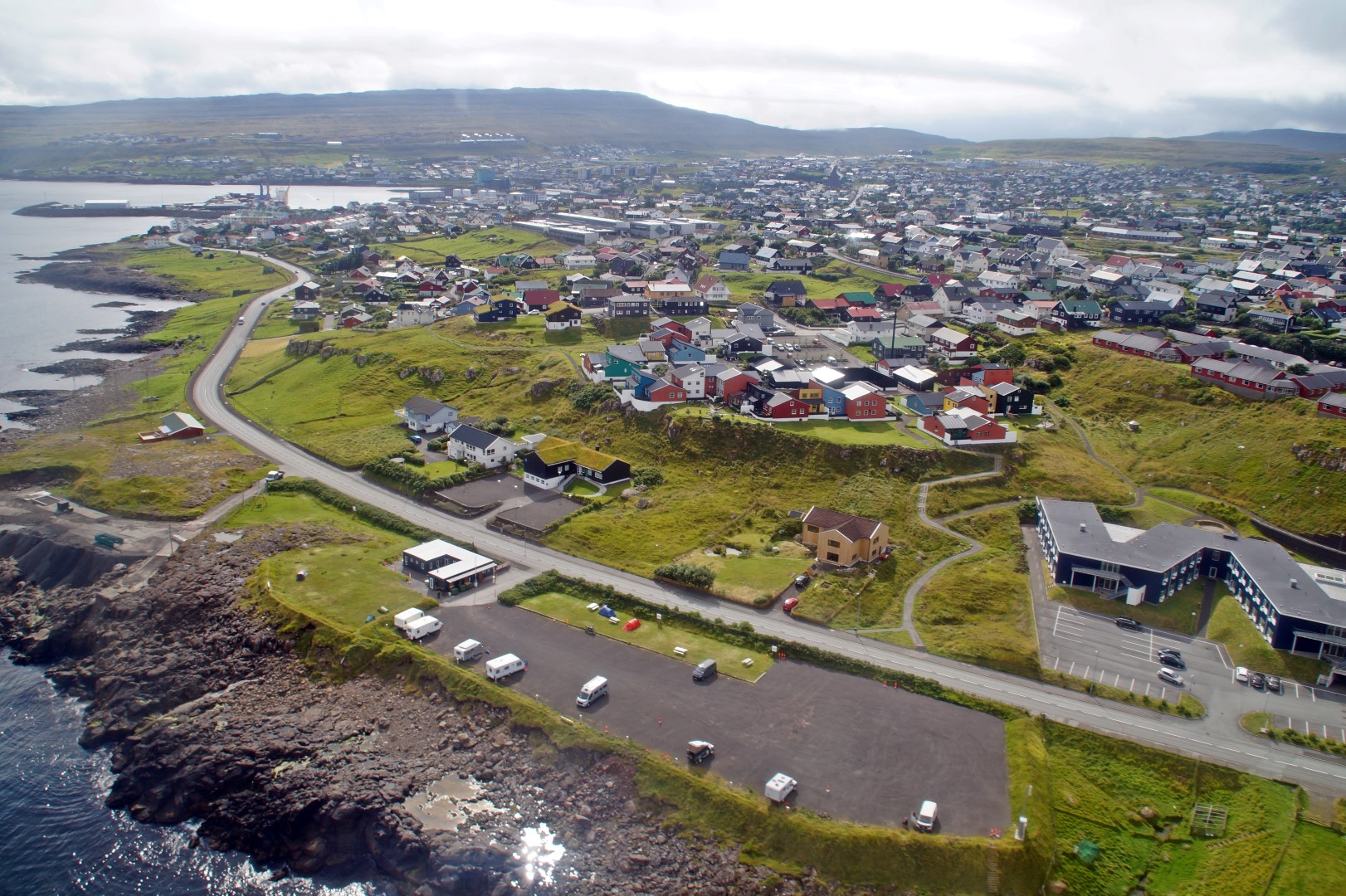
Flying over Tórshavn
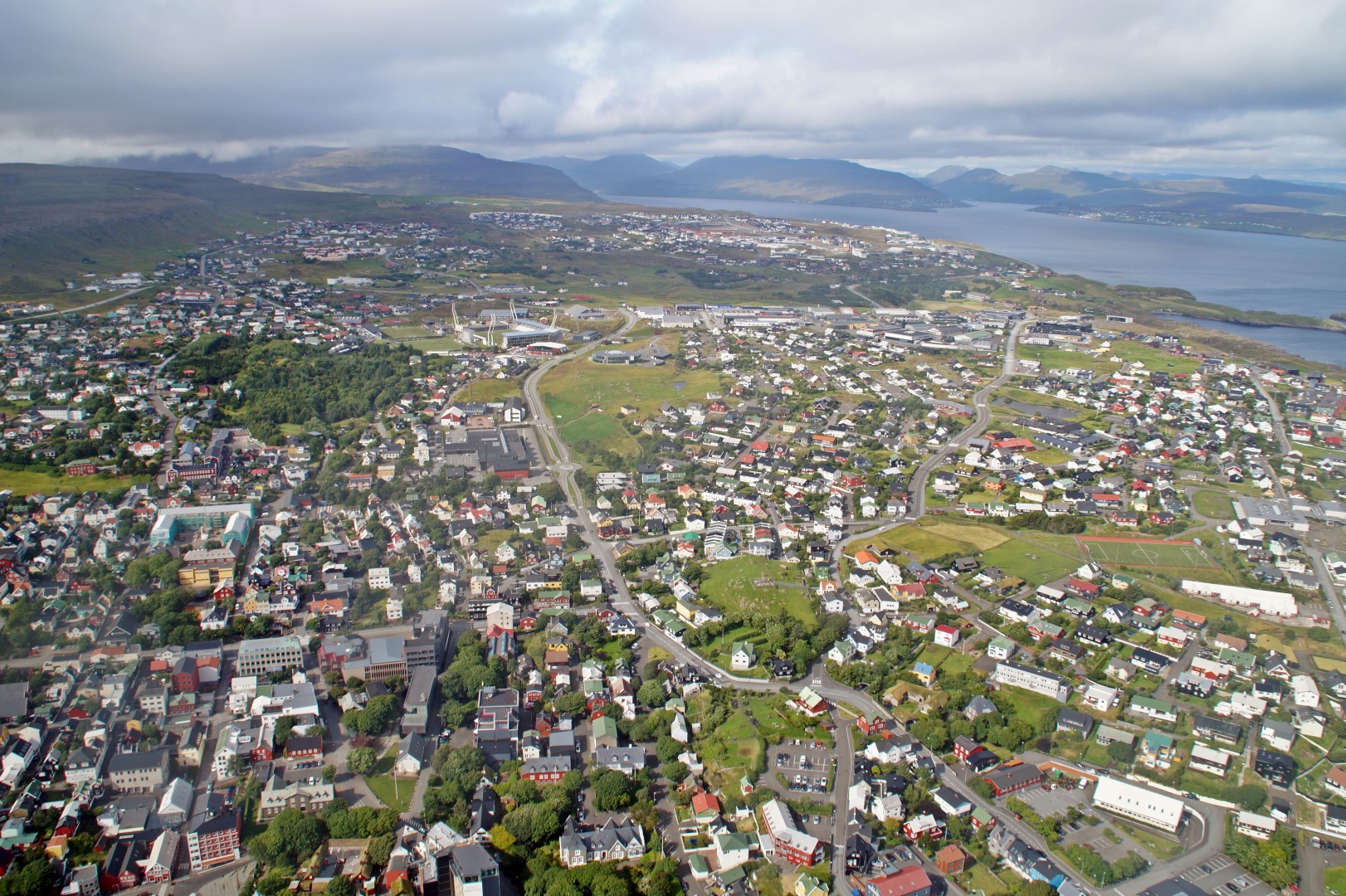
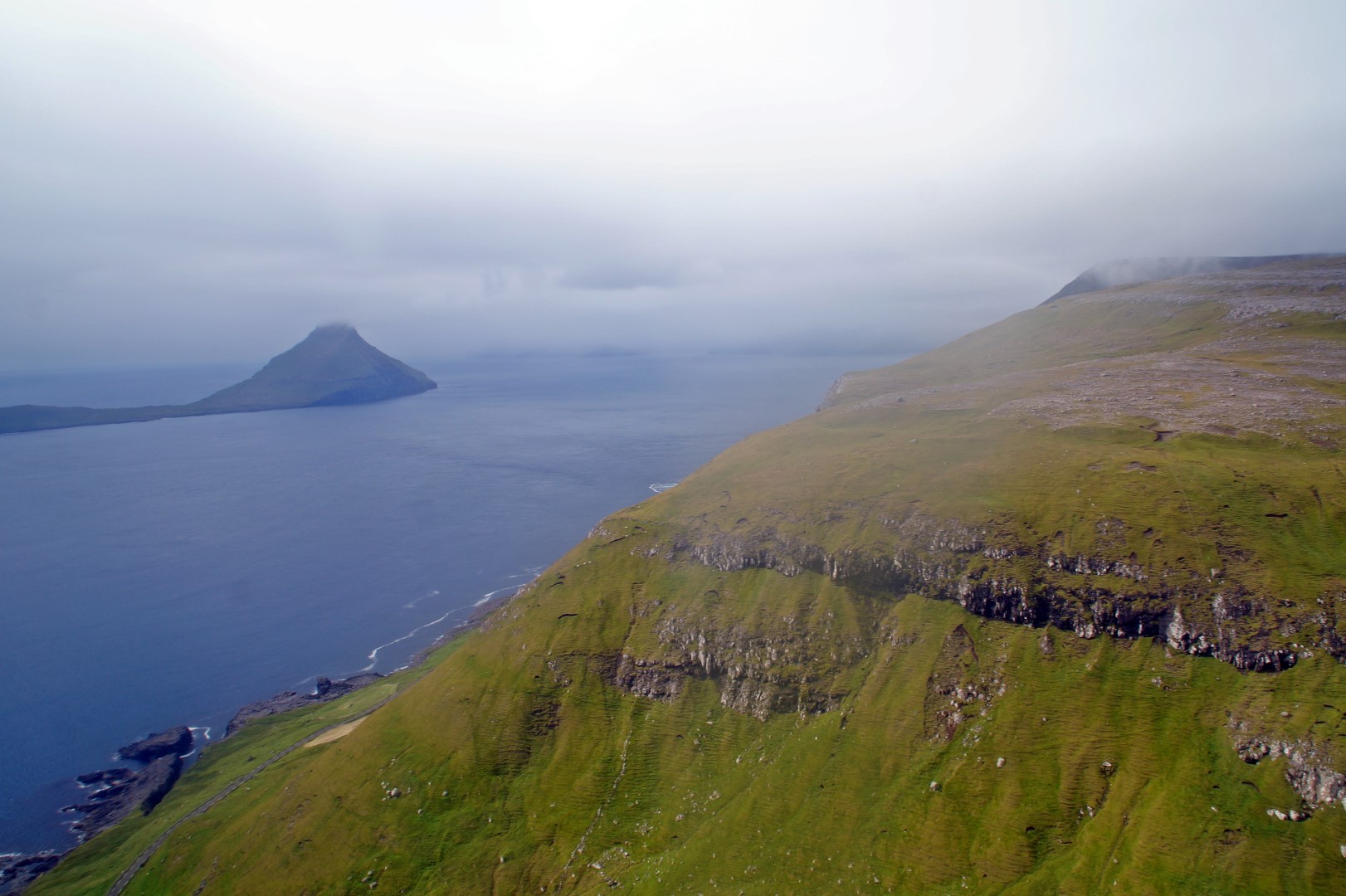
Koltur appearing
I was so happy to finally be on Koltur. Every time I had visited the Faroe Islands, I had seen Koltur from the other islands, and I’ve always thought it was extraordinarily beautiful. Koltur has a spectacular shape with a high mountain on one side that rises to 478 m. and a flat meadow on the other side where the highest point is just 101 m. – as seen on the picture above. So no matter where you see Koltur from, it will always look different. But now we were finally there and seeing it from its own perspective.
When we arrived, we were greeted by a lovely lady, Lükka, who lives on the island with her husband. Koltur is an interesting place, because it’s only inhabited by two people, making it the least inhabited island in the Faroe Islands. Back in 1997, after the island had been uninhabited for 7 years, Lükka and her husband Bjørn decided to move to Koltur permanently, and today they own the entire island and plan on making it the first national park in the Faroe Islands. Prior to our trip, my friend Jens had called Bjørn to ask if it was okay for us to come there for a night, which was fine. Since he wasn’t home when we got there, Lükka showed us around, told us a bit about the place and pointed us to a flat spot in the meadow, where we could set up our tent. She also unlocked the public toilet for us to use for free, and even came to our tent later in the evening to check on us. And we didn’t have to pay anything for it. They really take good care of their tourists in the Faroe Islands!
When we first arrived on Koltur, there was no fog on the mountain – Uppi á Oyggj (also known as Kolturshamar) – but then 5 minutes later, a thick cloud came in over the top half of the mountain and stayed there until the next morning. So much for my mountain climbing plans!
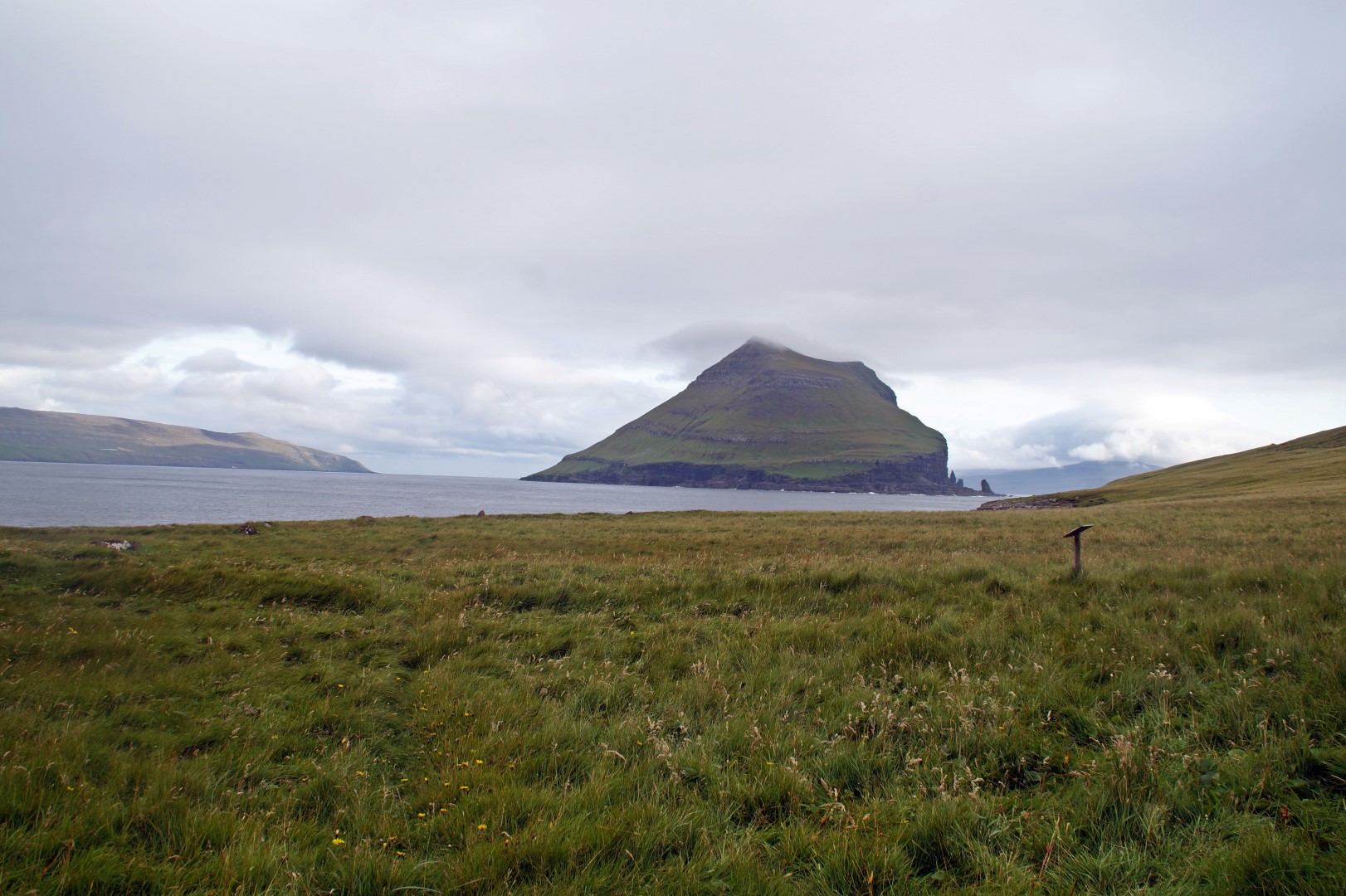
Arrived on the flat end of Koltur with a view of Streymoy and Hestur
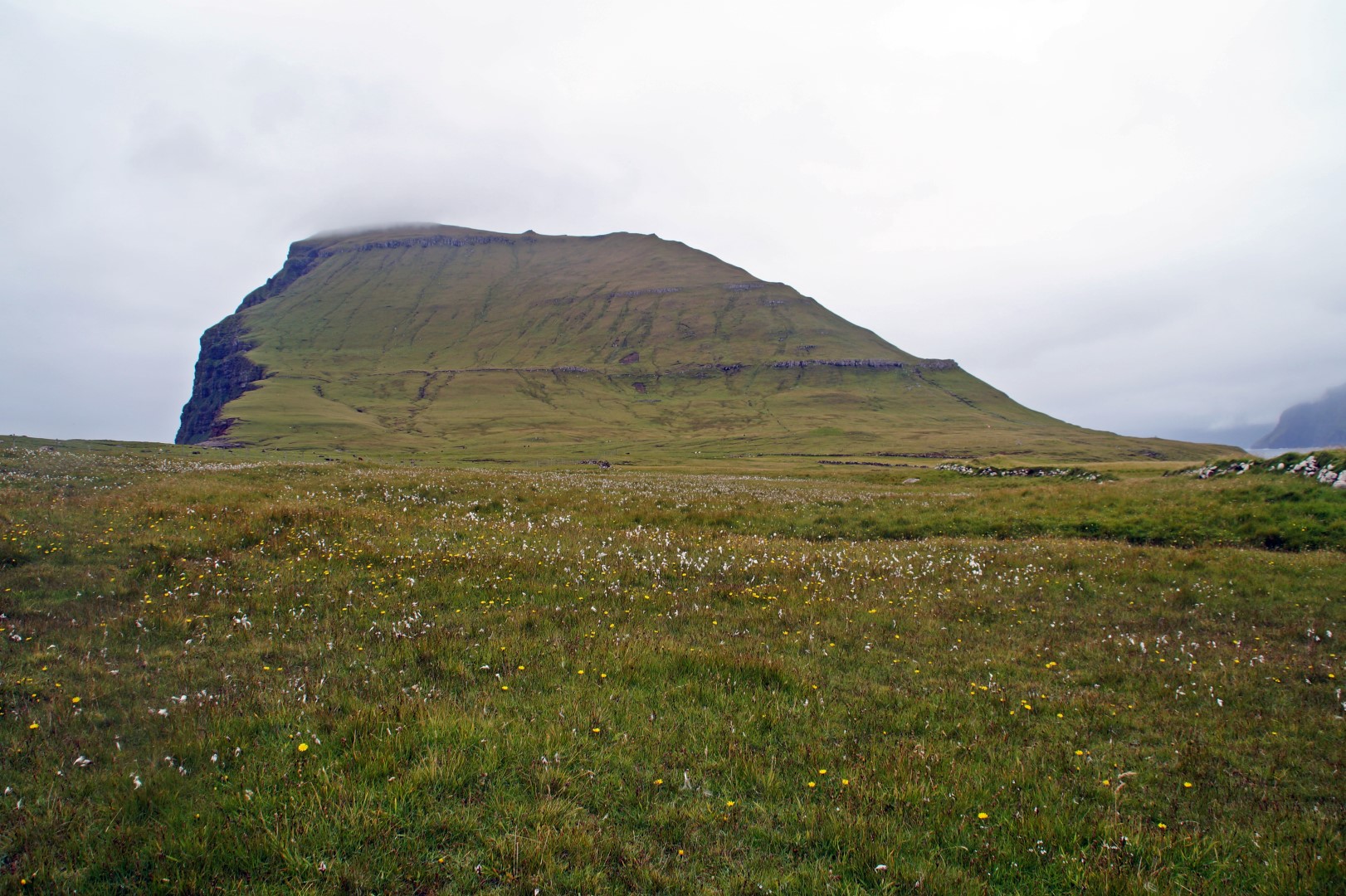
The mountain on Koltur – just minutes before the fog came over it
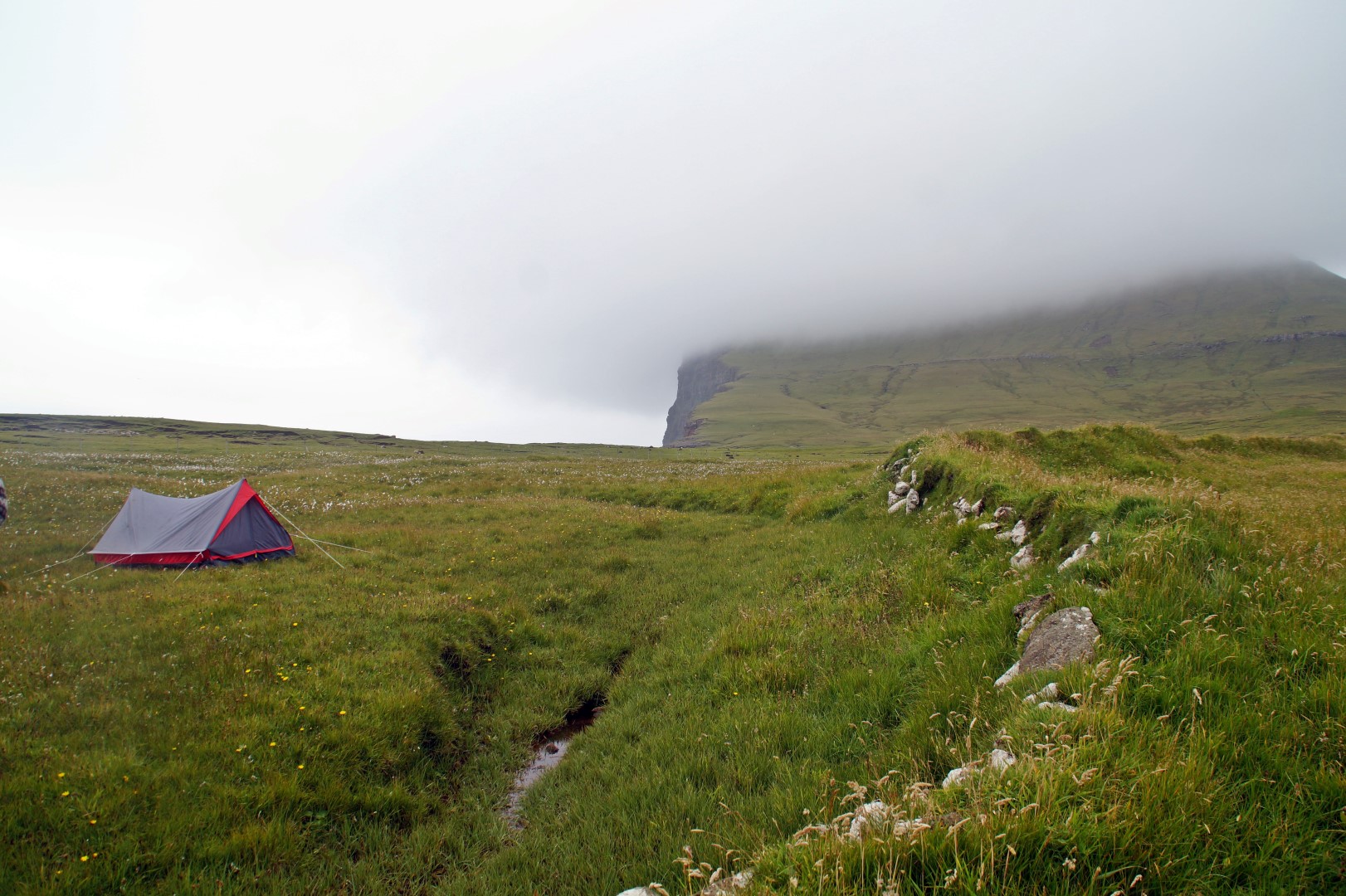
Our tent set up on the meadow – notice the fog over the mountain
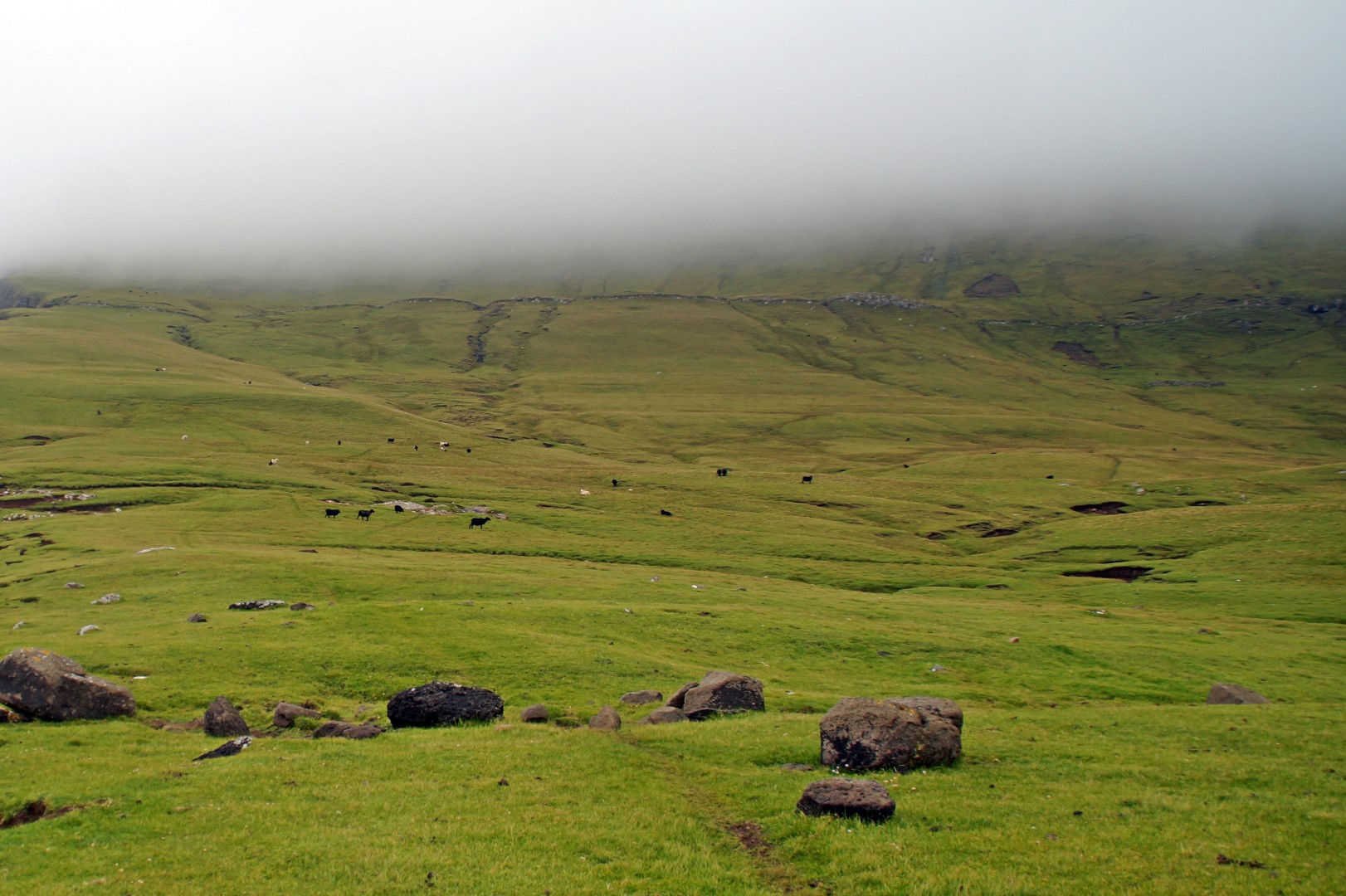
We spent the day checking out the old settlements and then went for a little walk to the west coast of the island.
Originally, when Koltur was first inhabited in the 1400s, the entire island was one farm like it is today, but as the years went by, more and more people moved to the tiny island, and in 1890, there were 42 people living there spread over 6 families, who lived in the two settlements, Heimi í Húsi and Norðuri í Gerðum, both of which were later abandoned.
The first settlement that we explored was Heimi í Húsi, which is located right beside the heliport. Heimi í Húsi is the oldest settlement on Koltur, and the best preserved one. It contains two farms, Niðri í Húsi and Uppi í Búð. During the years 2000-2012 major conservational work was done in order to preserve the houses of Heimi í Húsi, and in 2012, it opened as a museum. Despite these reparations, there has been very little modernization compared to the rest of the Faroe Islands, which gives a very authentic insight into the way people lived on Koltur in the past.
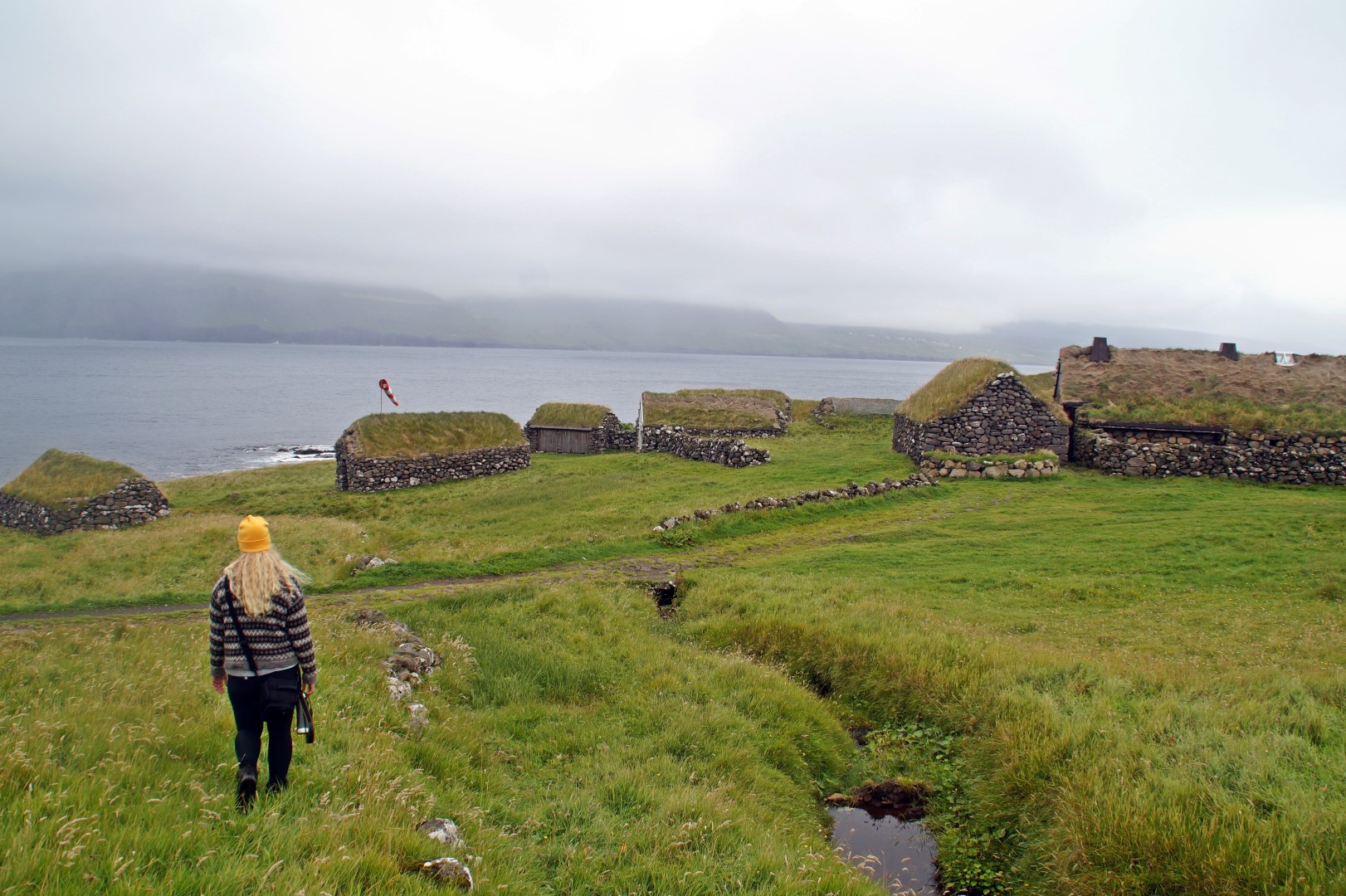
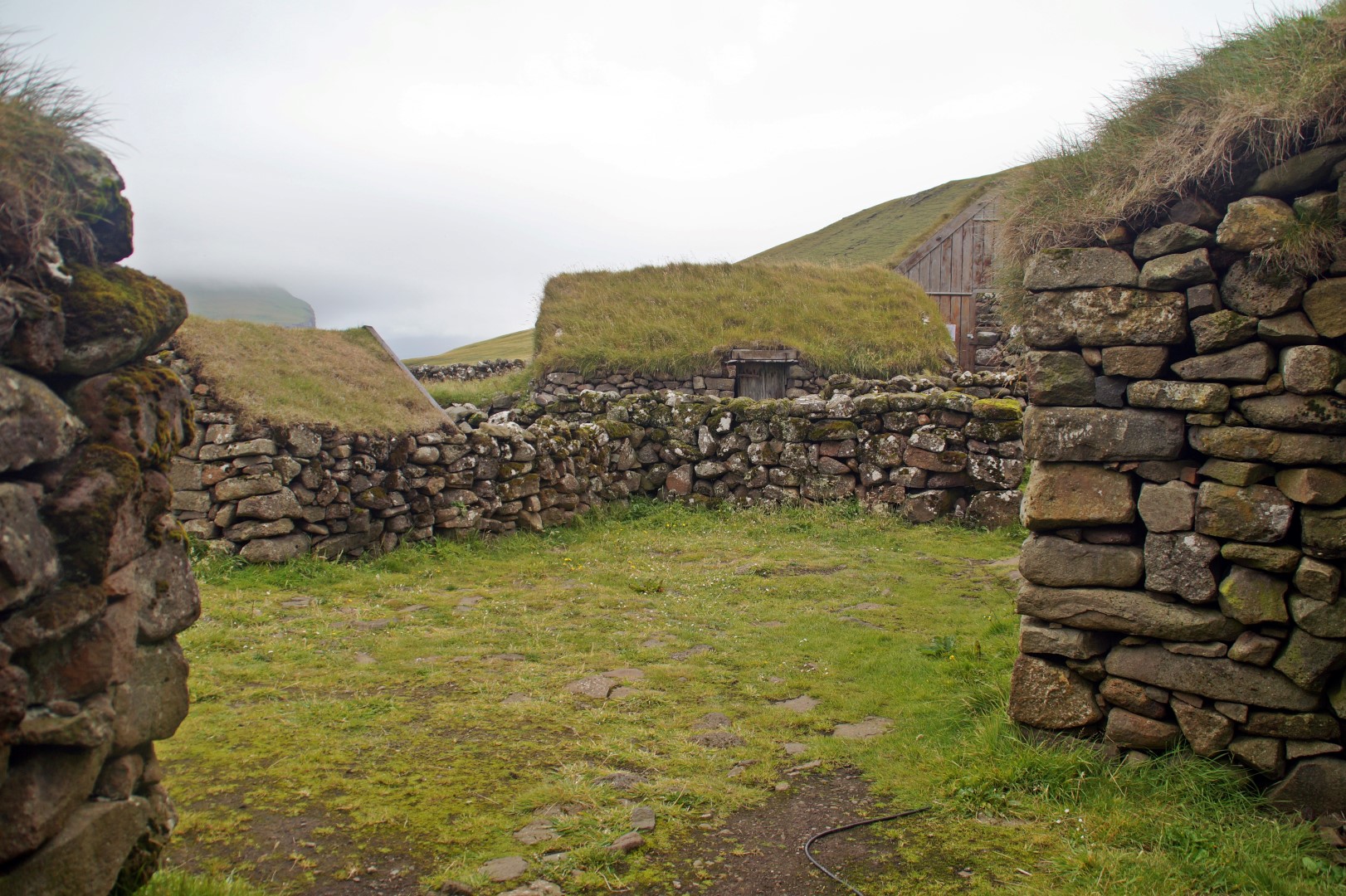
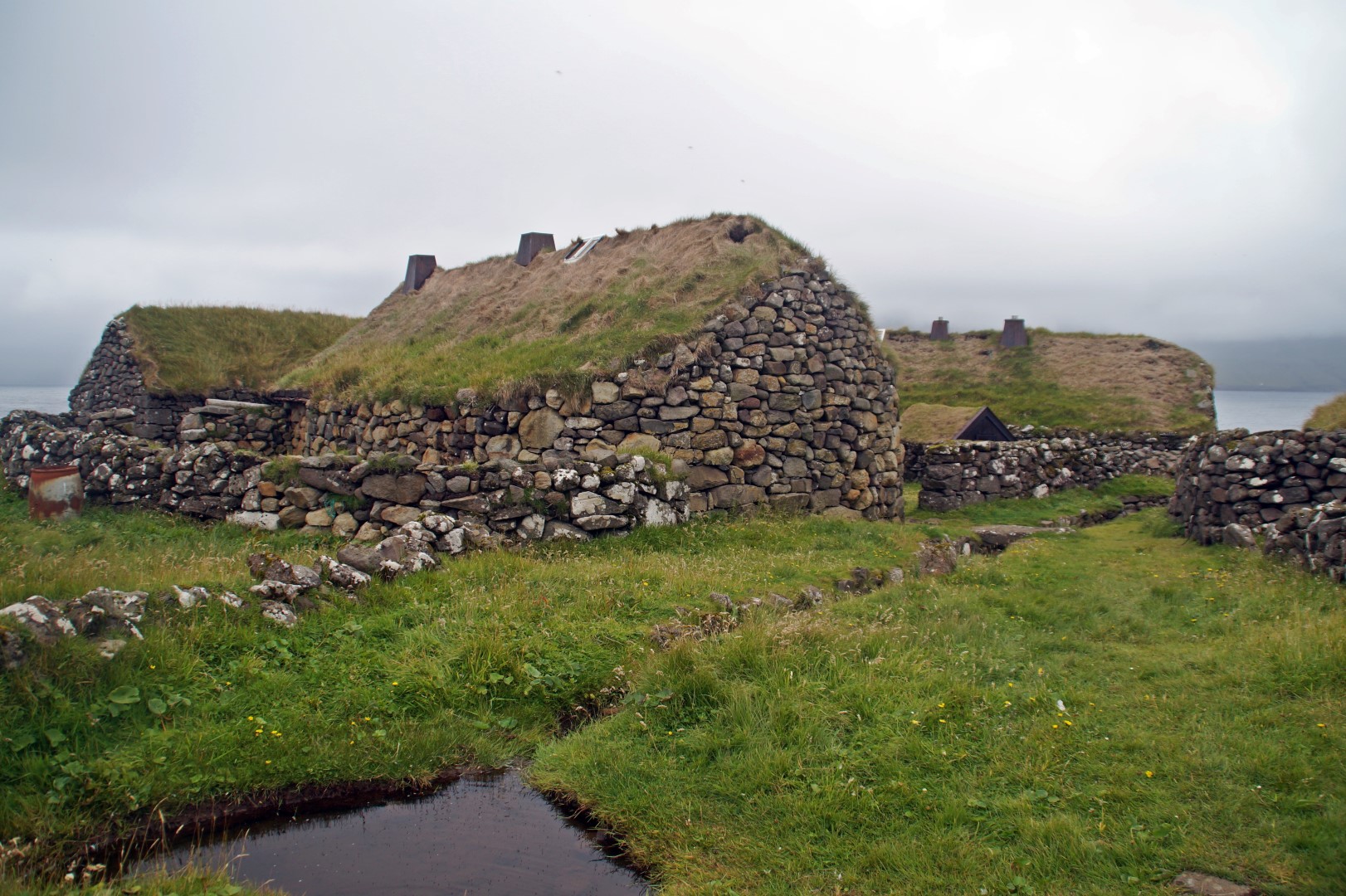
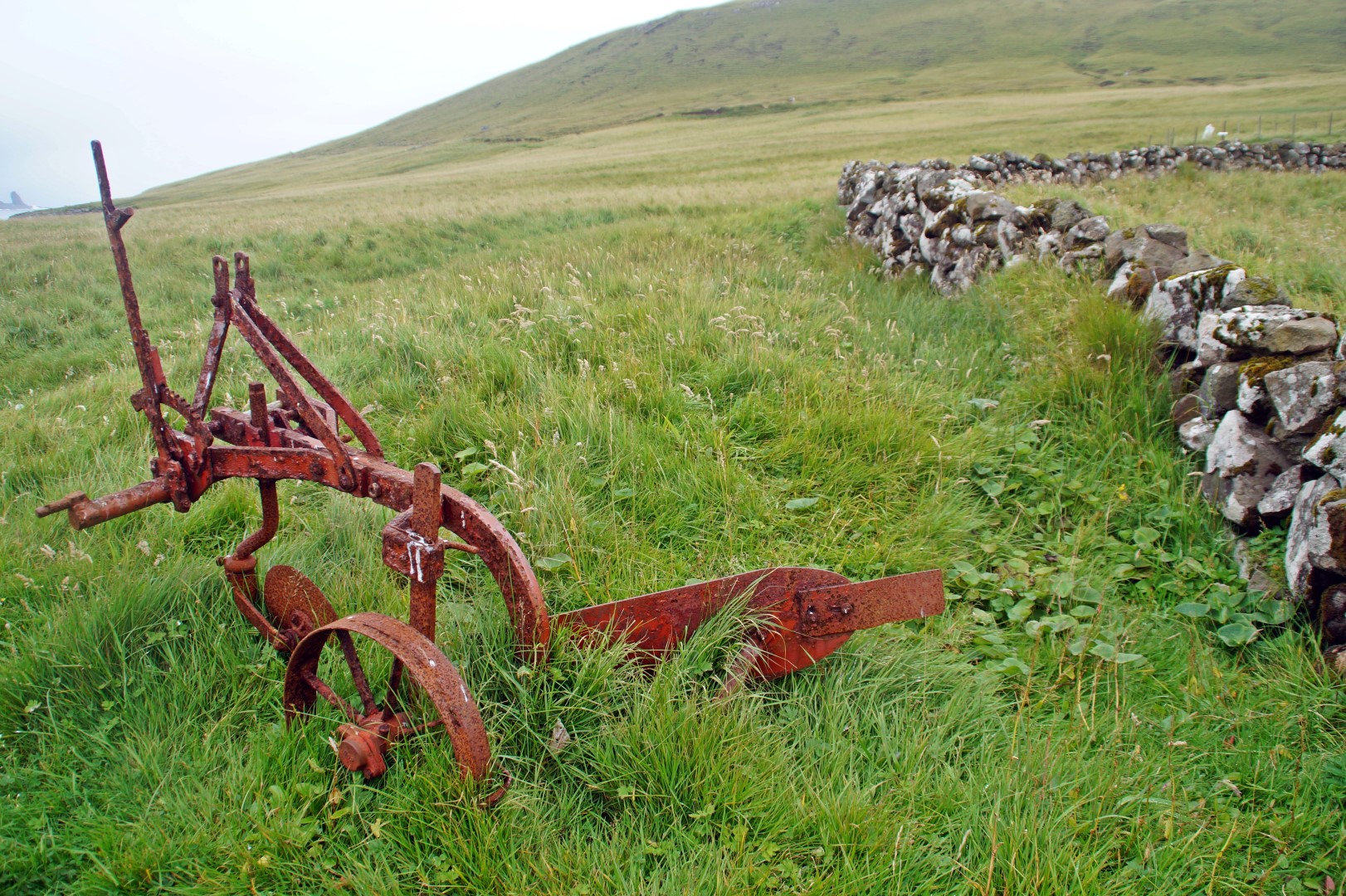
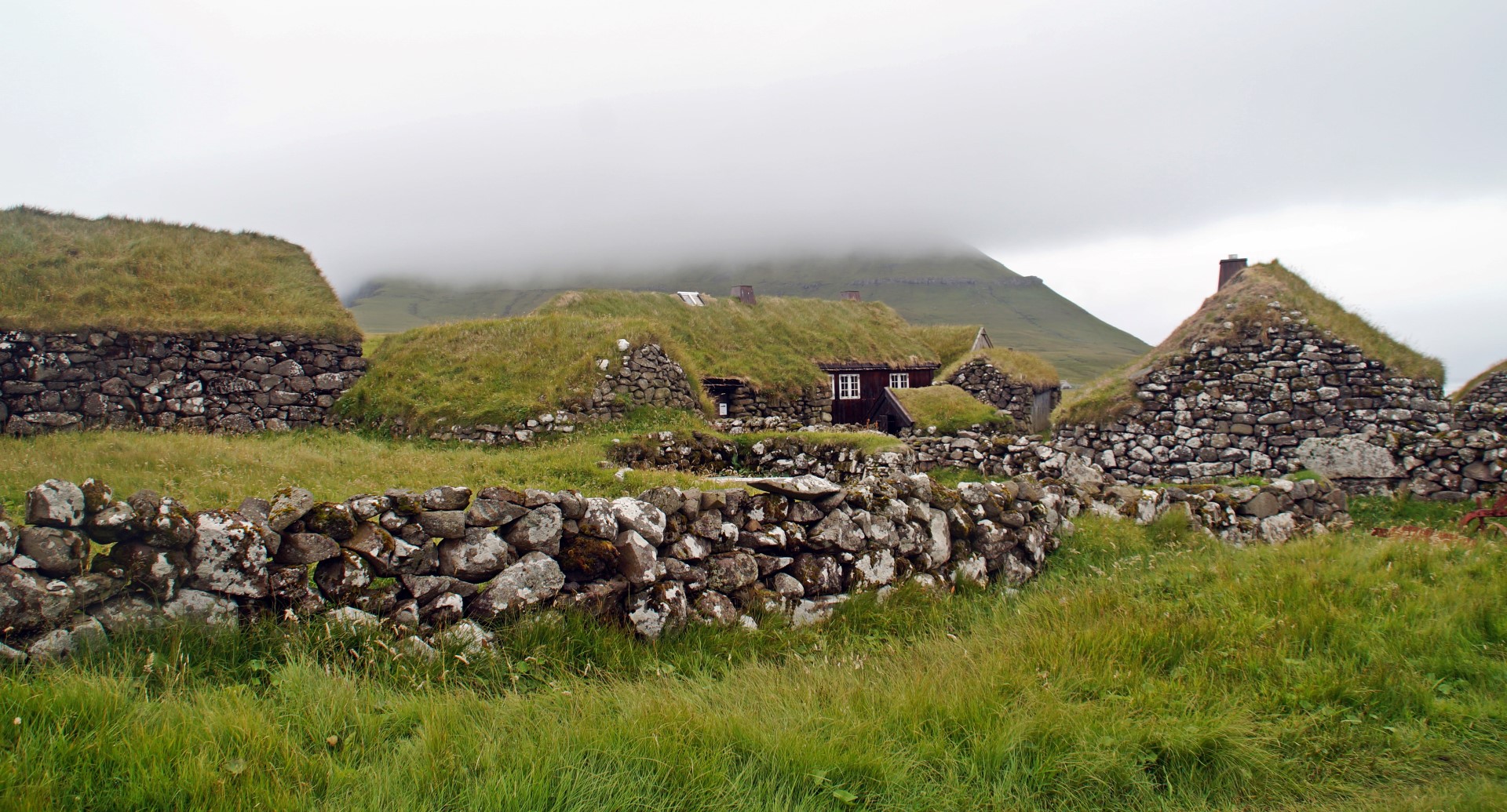
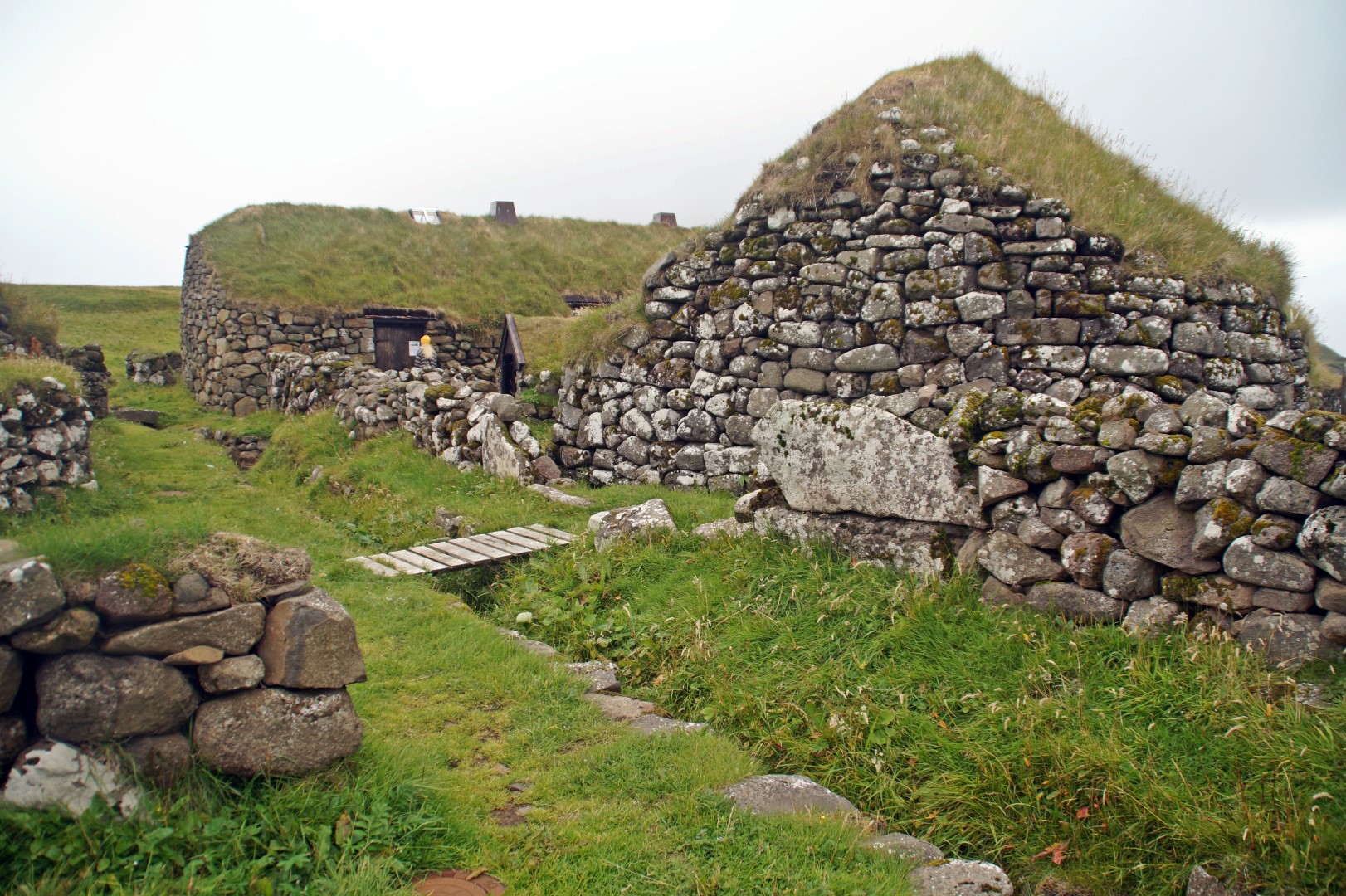
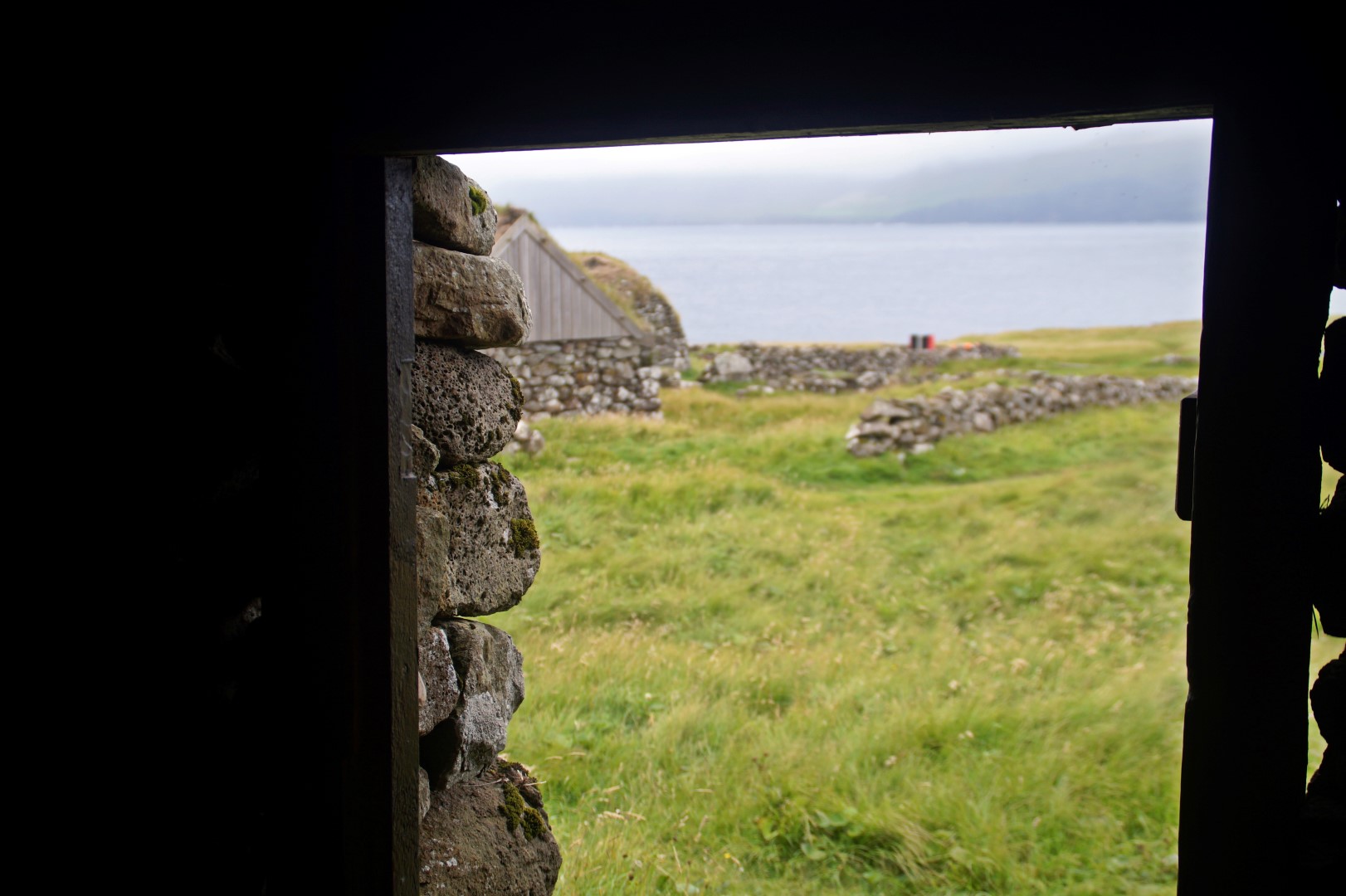
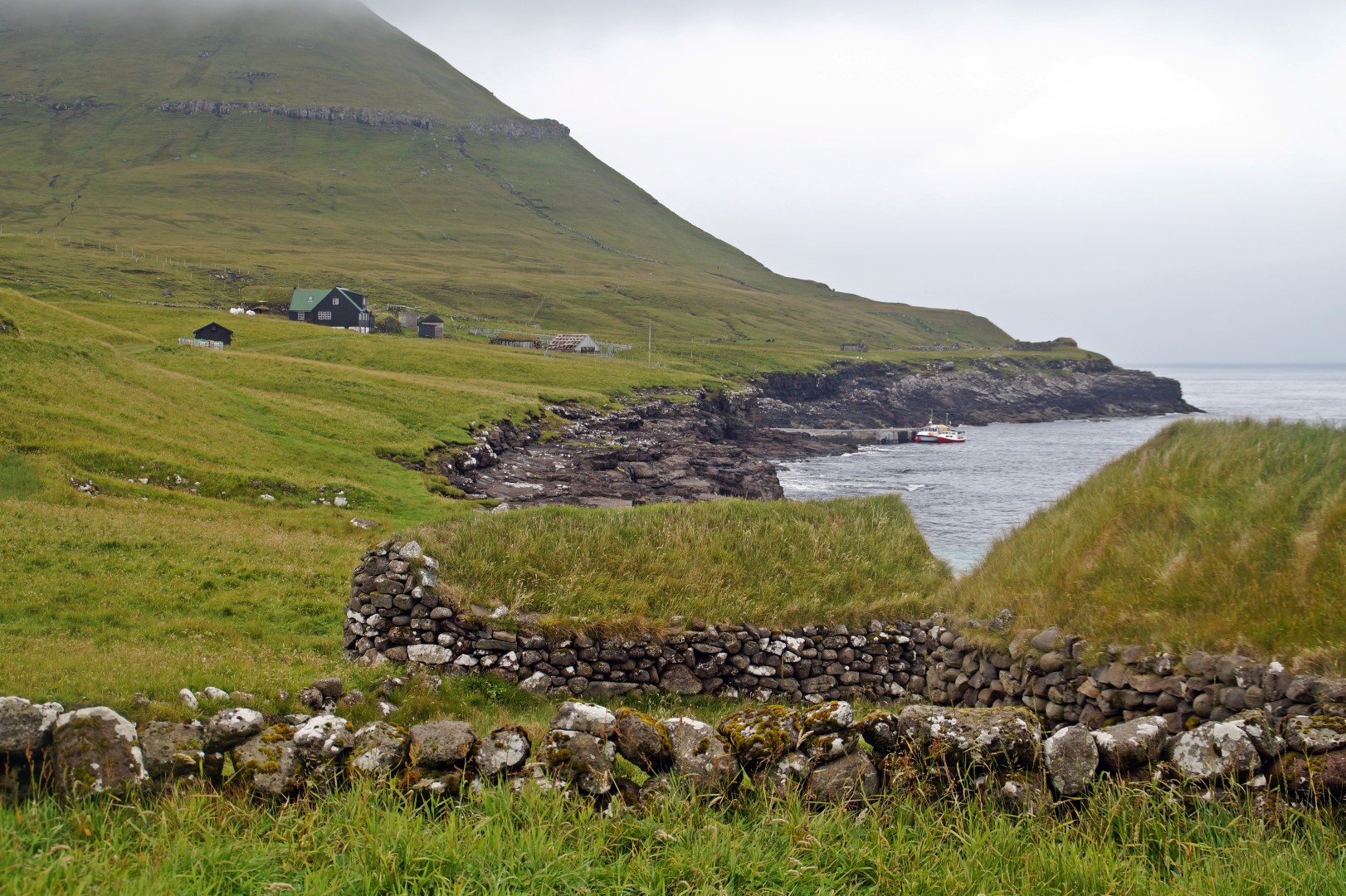
Heimi í Húsi and the modern farm seen in the distance
After exploring the old settlement, we walked along the coast to the modern farm, and stopped to take some pictures at the tiny beach. It’s hard to believe that such a cold and rainy country even has a beach – but in fact it’s a rather nice one. And although I’ve never experienced it myself, I’ve heard that a few days a year it’s actually possible to lay at the beach in a bikini without freezing to death! I’ll have to try that one day 😉
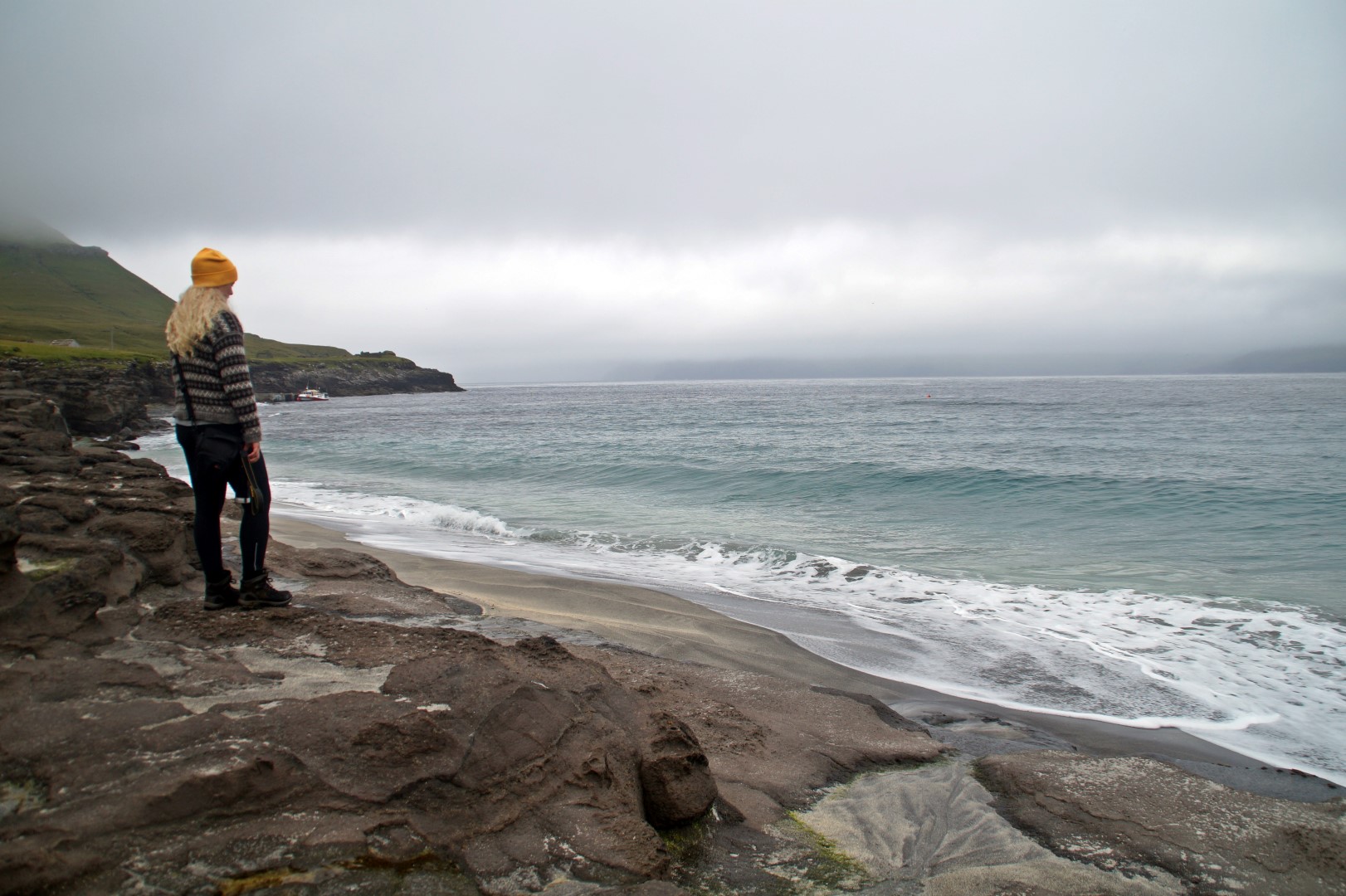
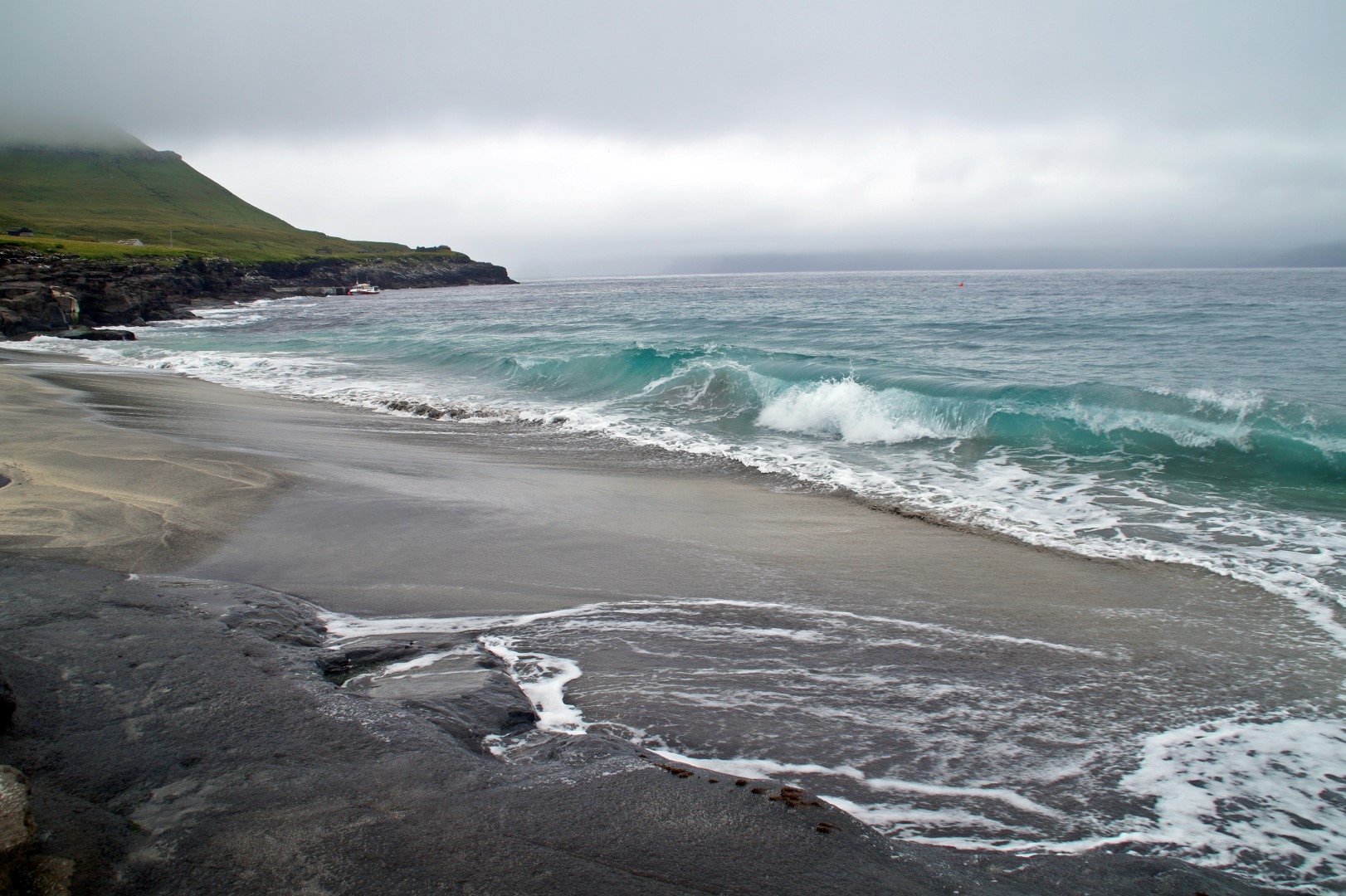
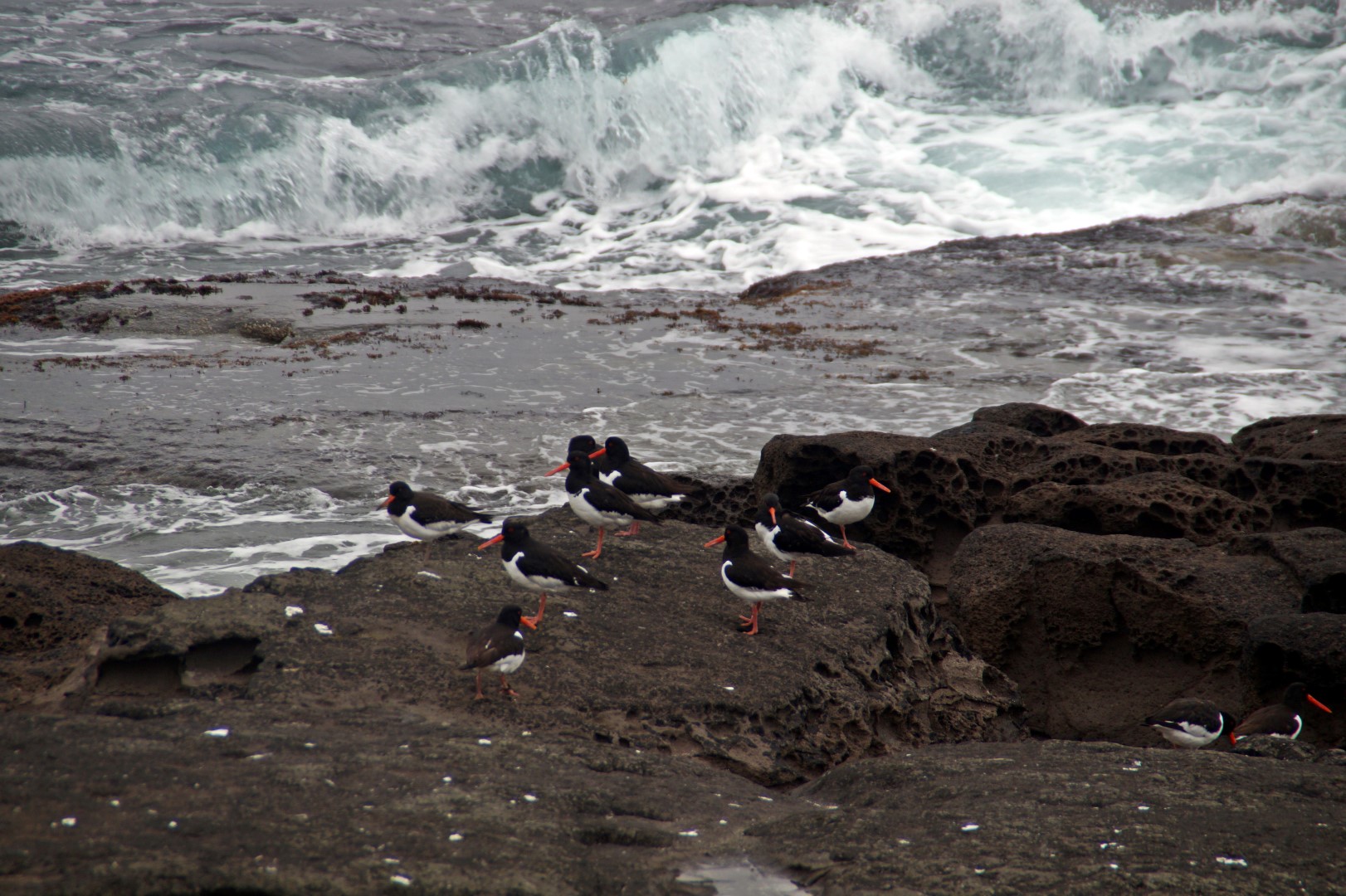
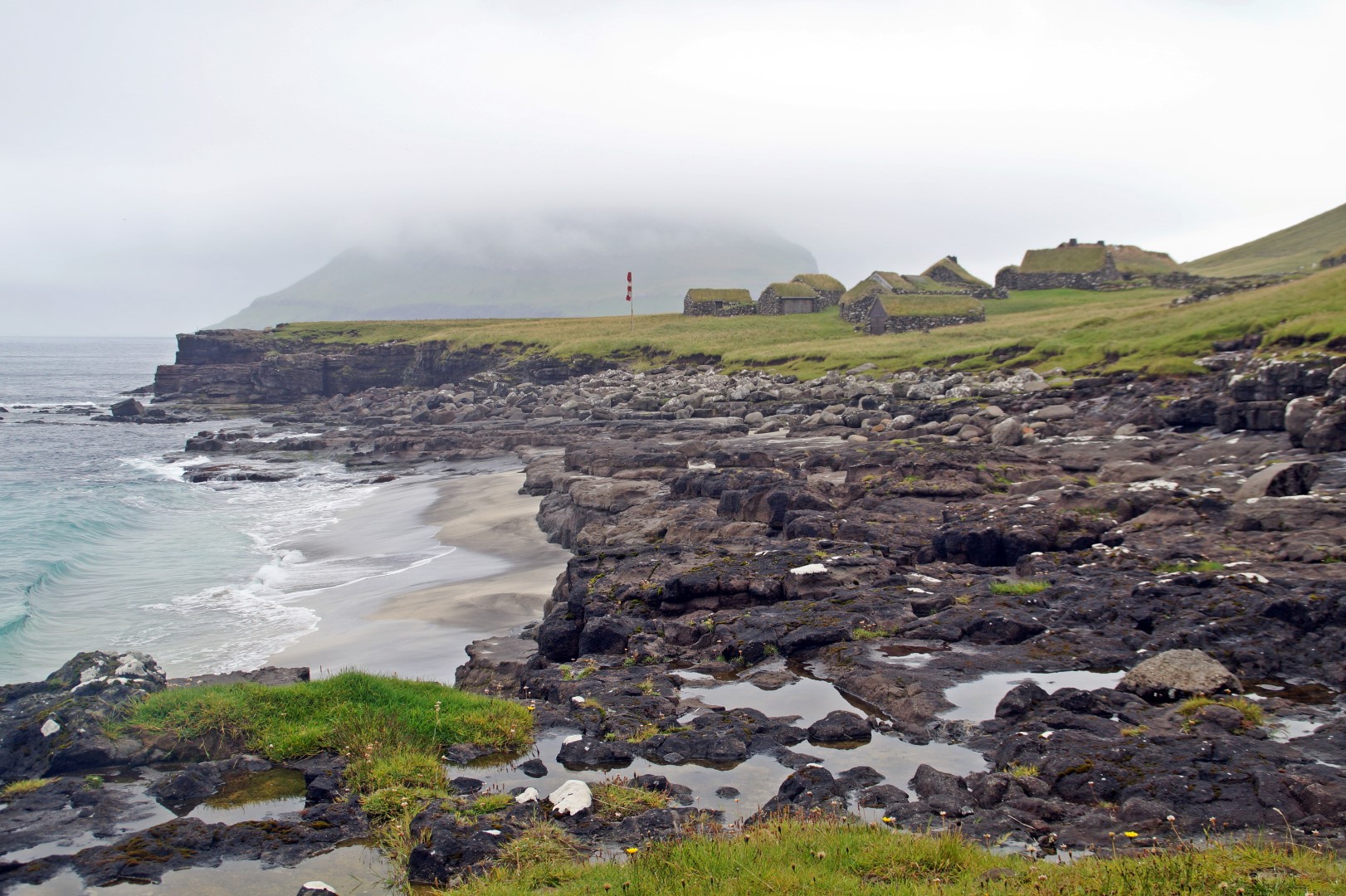
Next up was Norðuri í Gerði, the other old settlement, where Bjørn and Lükka live today in a modern farm building. The old houses in Norðuri í Gerði are in much worse condition than those in Heimi í Húsi and only a few of them are still standing. Hopefully someday there will be funds to conserve them too.
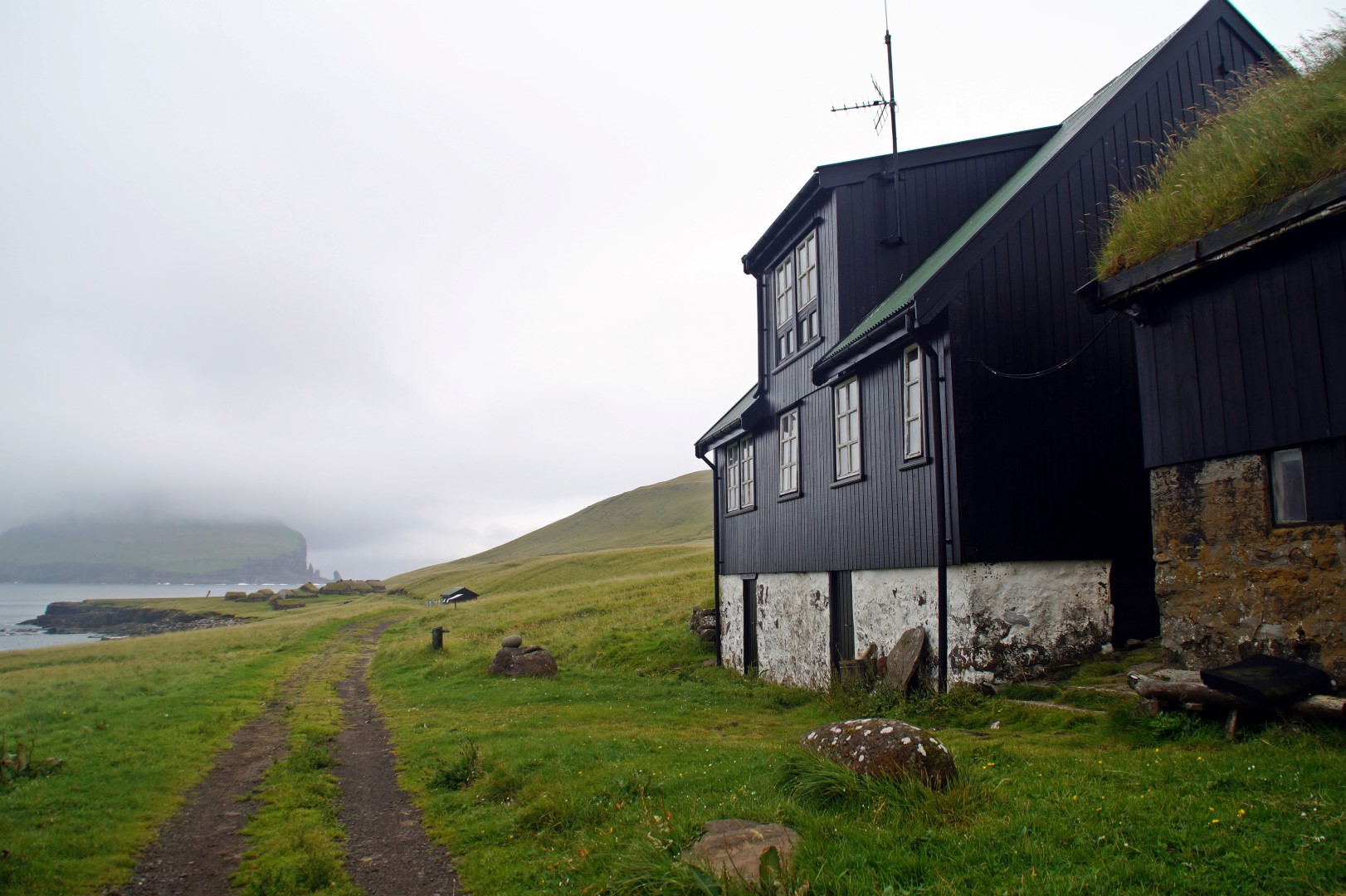
The modern farm
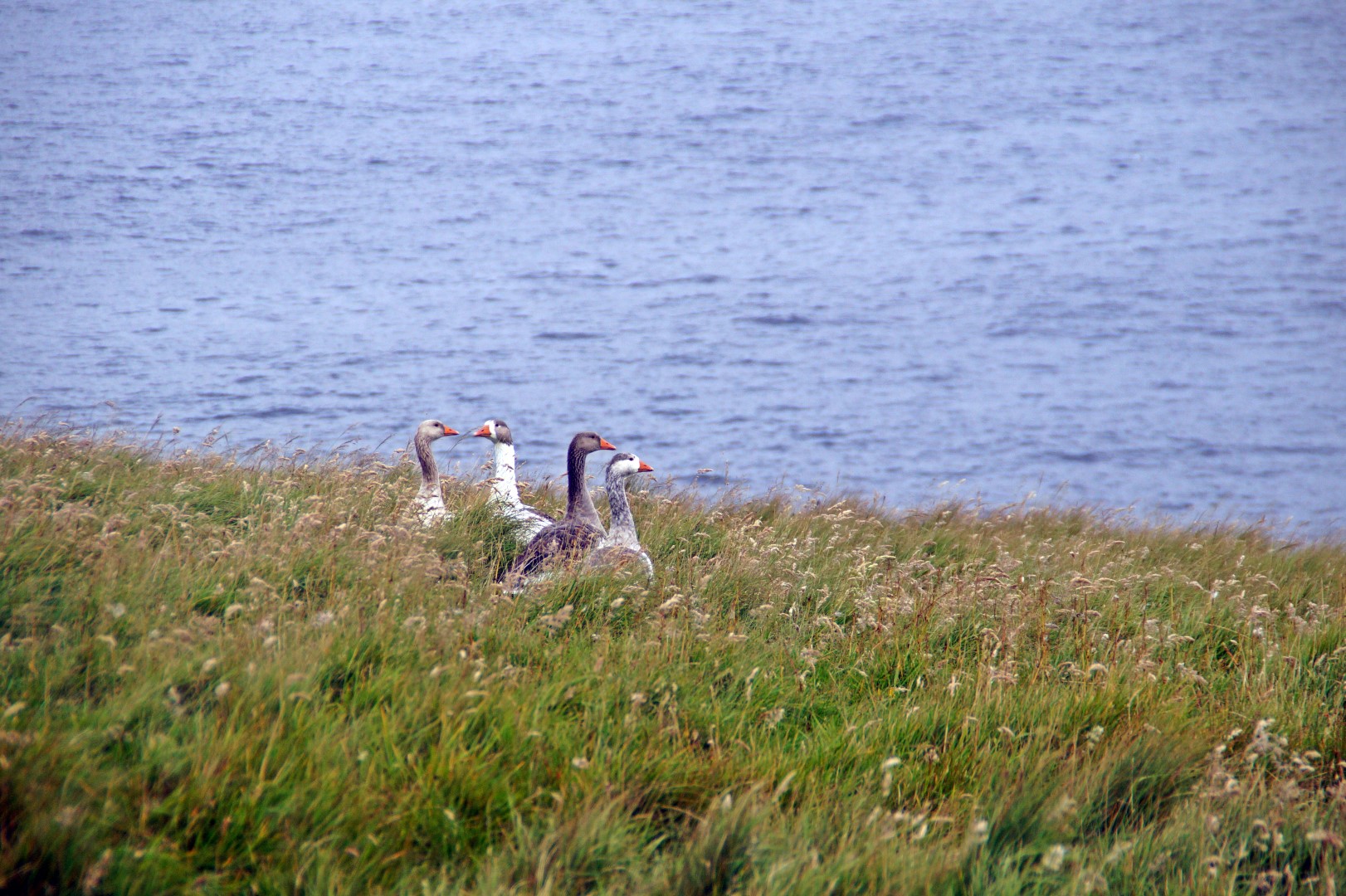
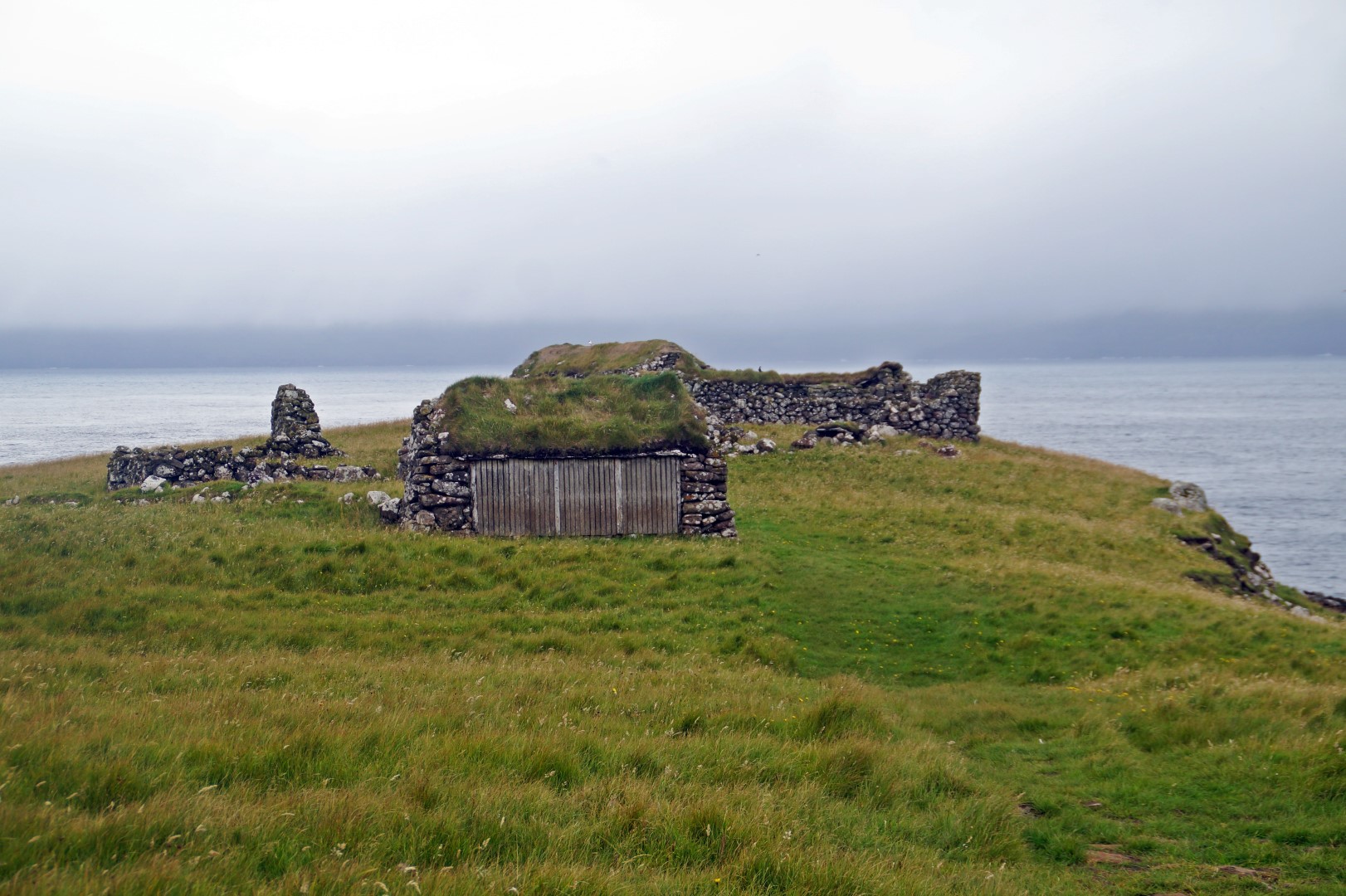
The old houses in Norðuri í Gerði
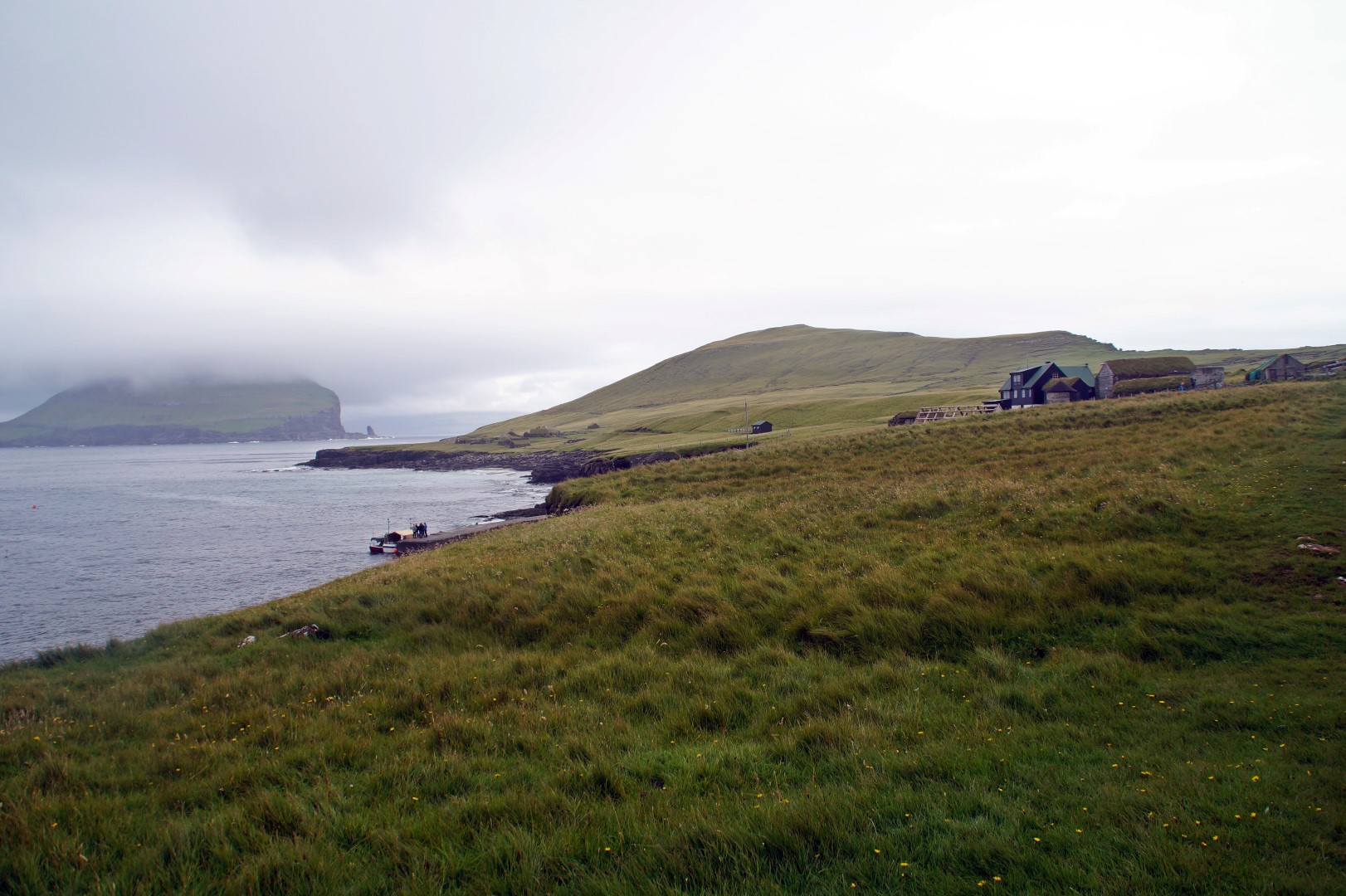
The modern farm and Heimi í Húsi seen from Norðuri í Gerði
After being cultural all afternoon, it was time to explore the wild side of Koltur, which was dramatic, beautiful and a huge surprise! We walked to the west coast, where the cliffs went vertically into the ocean and were scarily steep. A true hidden gem revealed itself before our eyes, one that most people don’t get to experience. This must be the best kept secret of the Faroe Islands. I can’t believe I’ve never heard about the west coast of Koltur before, because in my opinion, it’s one of the most beautiful places in the entire country.
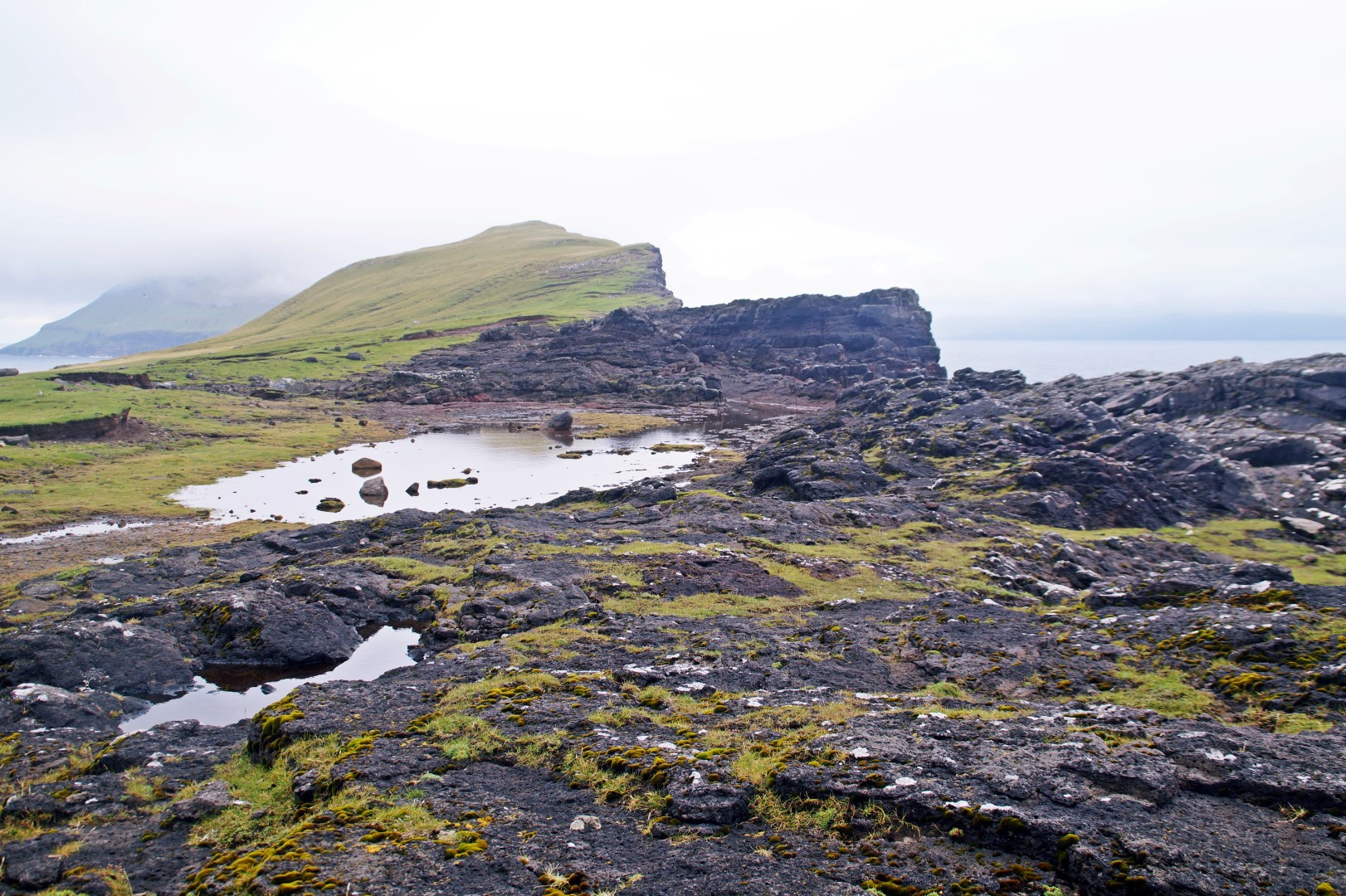
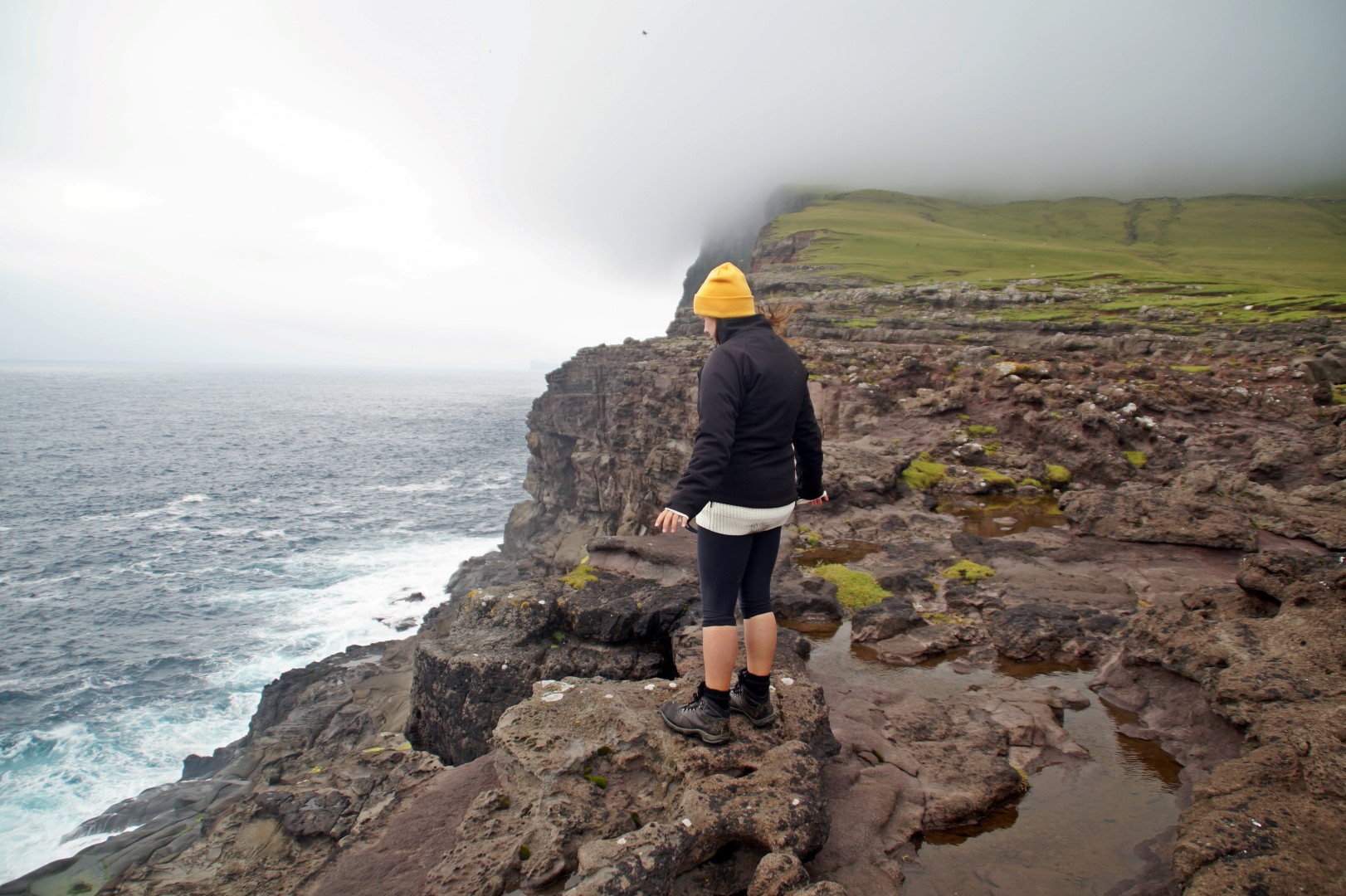
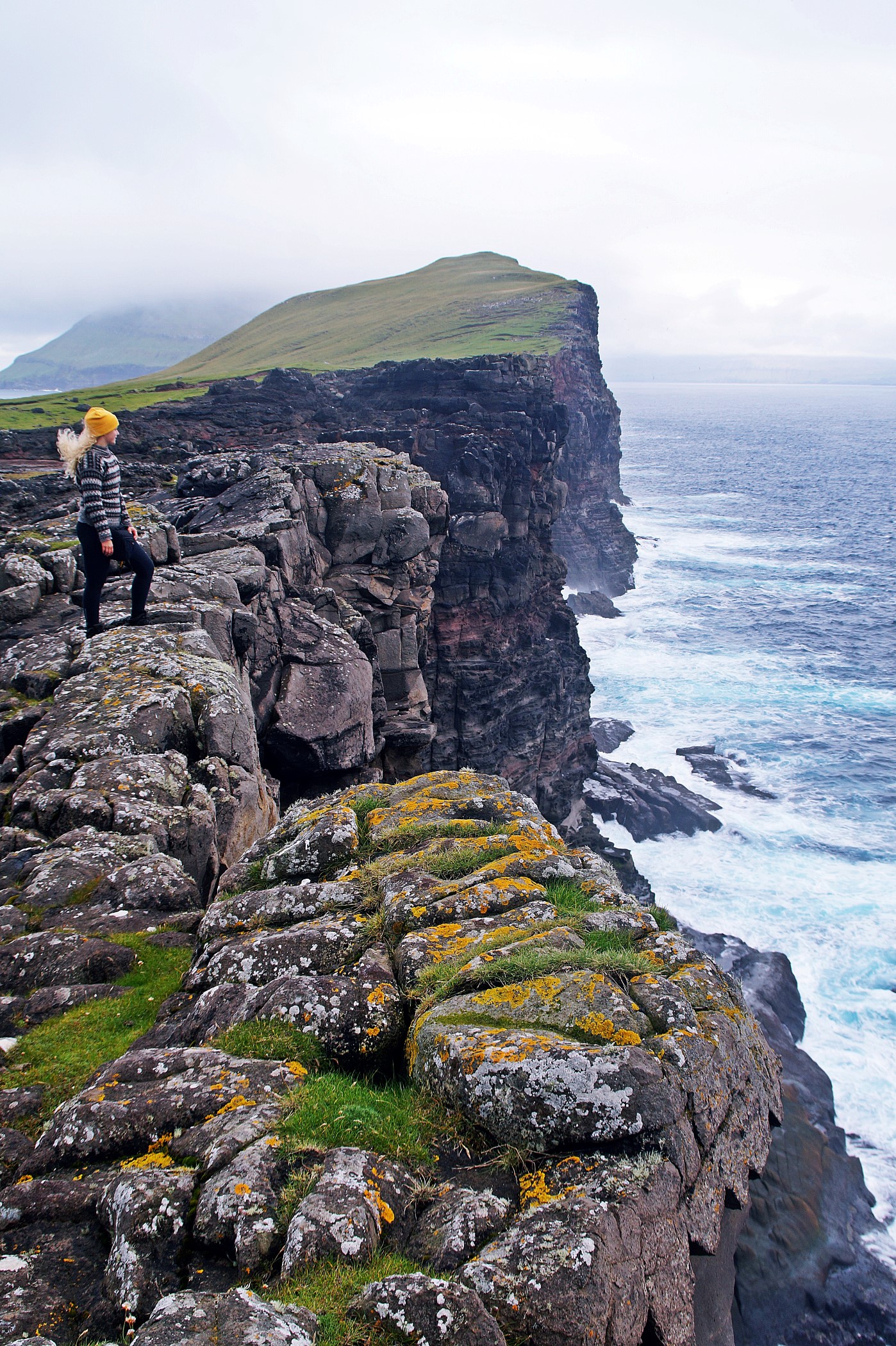
We spent a great amount of time on the west coast before the incoming fog forced us to get moving. We went back to the tent and spent the rest of the evening playing cards, eating our dinner and talking about the amazing day that we had just had, before going to sleep in our warm sleeping bags away from the cold fog.
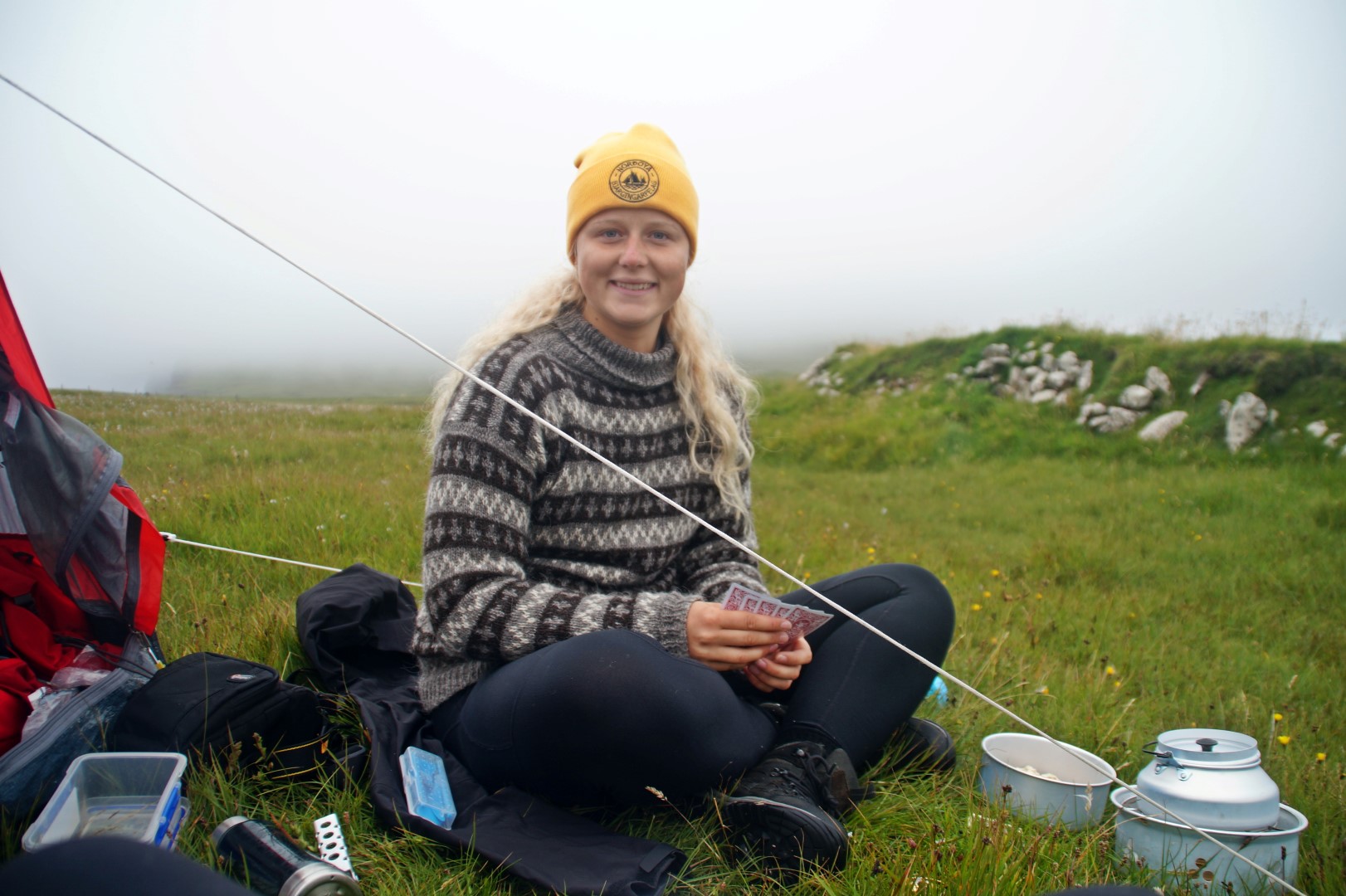
The next morning, we woke up early, packed up our tent and headed to the heliport, where Lükka was waiting to help us board the helicopter which would soon be approaching. Visiting Koltur had been an enriching experience, and I can say for certain that it won’t be my last visit! Someday I will come back to climb the mountain – and maybe someday, I can even work there as an Archaeologist (that would be a dream come true!).
But for now, it was time to leave Koltur. A new adventure was waiting for us on a new island – stay tuned!
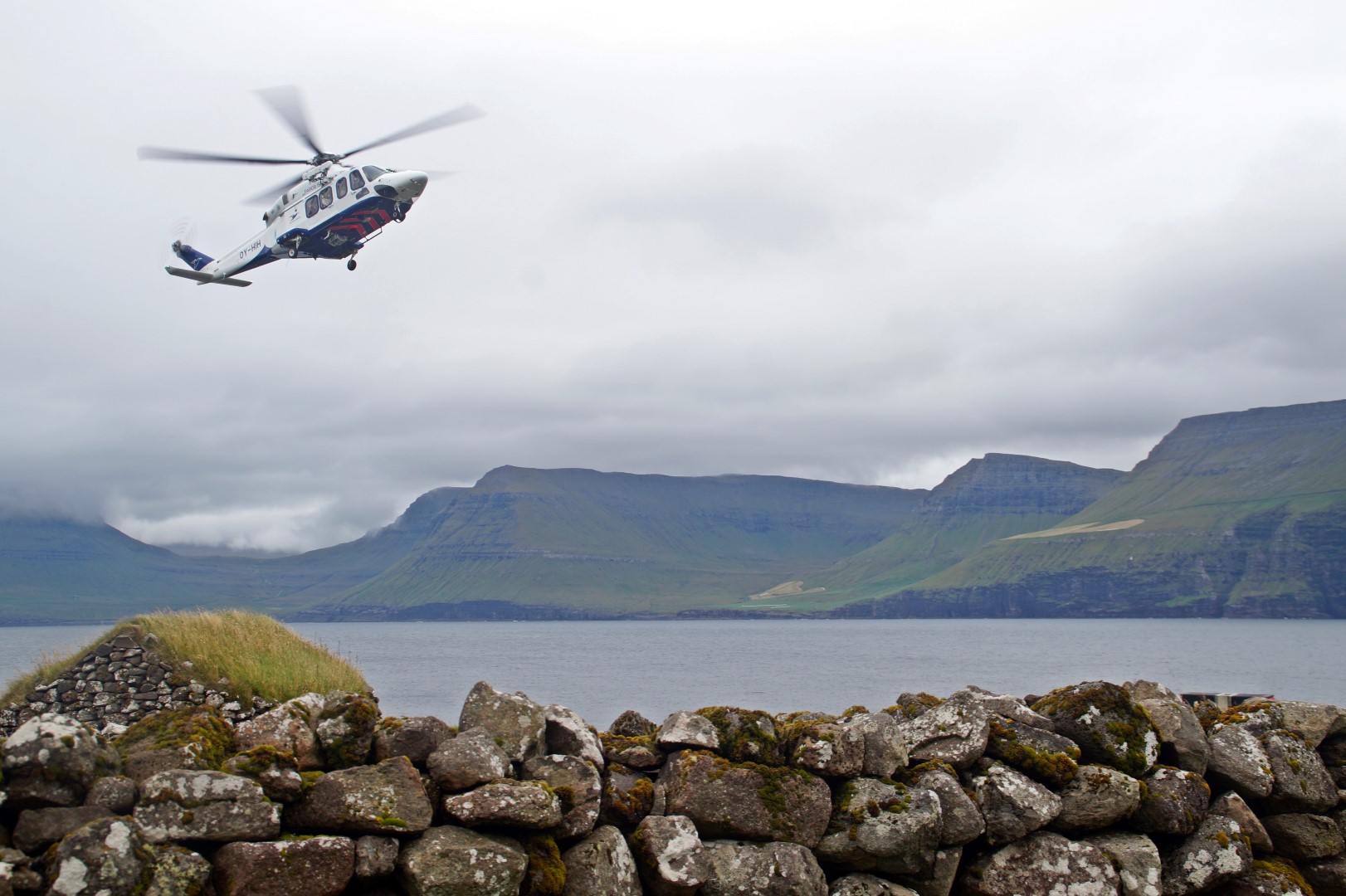
Leave a Comment
Pingback: The return to Koltur and a hike up the smallest mountain in the Faroe Islands – Northtrotter on 13/10/2016
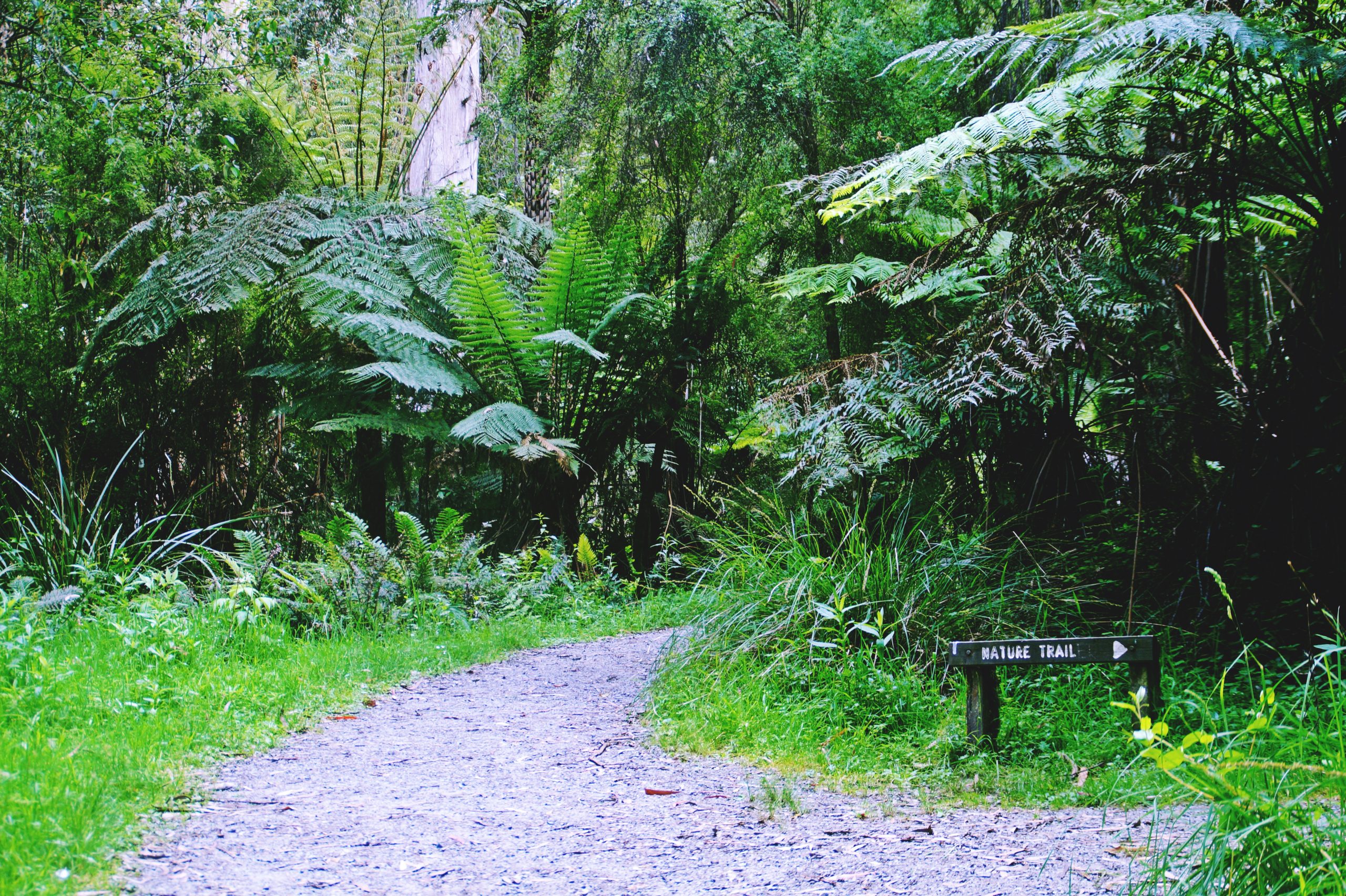
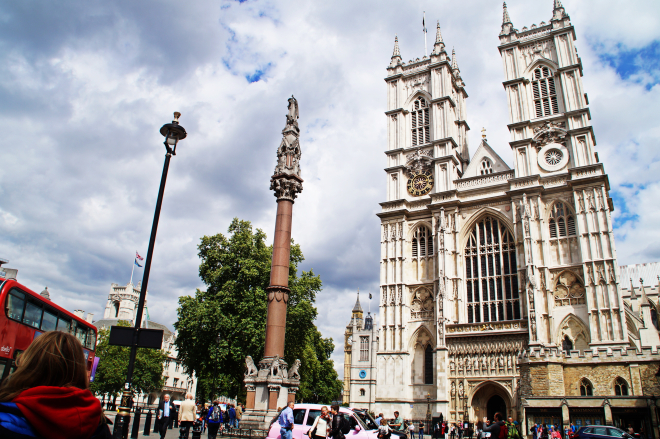

15 COMMENTS
Philippe
6 years agoHi Melissa,
I learnt tons of things about the Faroe Islands thanks to you ! That is great since, on an impulse, I decided to jump in my car and come to the Faroes for 2 monthes ?Unlike you, I do not plan to come live here – I would miss the diversity of the Alps too much – but I do like it a lot here and am glad to have so much time to discover it. The country is small enough to manage remote working + visiting. Remote working on rainy days, visiting on less rainy days.
Too bad that both Mykines and Koltur are impossible to visit off season. I was ready to fly to Mykines and spend 1 or 2 nights there waiting for the flight back, but there is simply no accomodation before 1st of May. And I would love to climb Kolturshamar but this is probably not possible either… but as you suggested I’ll go ask the tourist office.
In my opinion, these islands would be ideal in monthes like these – winter, spring – when hiking in the mountains above 500 meters of the main islands is still not possible.
P.S.: it was fascinating to read that you lived in Greenland for a while. Is internet reliable enough there for remote working ?
Melissa Cherry
6 years agoHi Philippe, I’m so glad that I was able to inspire you to come to the Faroes! It’s such a beautiful place that everyone should see! 😀 I definitely agree that it’s a great place for remote working and at the same time exploring. Greenland is good for that too, especially in Nuuk. The internet there is reliable, although a bit expensive. You won’t find any free wifi though, except at the library, but getting it to the apartment is easy.
As for Mykines and Koltur, have you considered camping? If the weather is nice it’s not cold too camp in April/May on the Faroes 😀 The only problem with visiting Mykines in the spring is that you won’t see the puffins, which the island is famous for, as they are only there during the summer :/ the island is beautiful though, so definitely still worth a visit!
Enjoy your time in the Faroes – I hope you’ll love it as much as I do!
Philippe
6 years agoHi Melissa,
Thanks for taking the time to reply. Not keen on camping this time – haven’t any gear for that – but maybe next time. Still have Sandoy and Suduroy to visit. Because, yes, I am already planning to come again. I hated Reykjavik but am loving Torshavn. And the light can be so incredible here, like last Saturday on road 10.
Thanks for the info re: Greenland. This opens new ideas. My relatives thought I was crazy to stay 8 weeks in the Faroes, what will they think when I say I go to Nuuk ? ? I’ll have to tell them it’s your fault.
Melissa Cherry
6 years agoOhh, you’ll love Sandoy and Suduroy! Both are such idyllic islands! I’m glad – but not surprised – to hear that you’re planning to come again – the Faroes usually wins people over 😉
Haha, well they might think you’re crazy, but I think it’s awesome! Nuuk is an incredible city!
Andre
7 years agoHi Melissa,
Amazing pictures; thanks for posting. Good luck with all the travel & your study! (Hemingway would be jealous of you)
I’ve put together some info for people who want to visit the island, as I was there last year:
It’s most easiest done by booking a trip via rib62.com. The guy running that company is amazing and a true Faroese host. It will give you a couple of hours on the island (bring your own food and drink) and you take in some of the caves on the main island too.
Day visit by helicopter is impossible as you can only fly one stretch a day according to Atlantic’s harsh but generally strictly enforced policy. You could potentially take the helicopter to and the rib boat back or vv, but that means you have still to pay for the full share of the boat excursion (so you practically pay double to visit the island, and have to make specific appointments with rib62 if you want to take the boat back).
There is no official accommodation on the island, & camping is as Melissa describes at the discretion of the 2 people living on the island, so call ahead.
Walking on the island is as Melissa points out a great thing to do: I noticed there is even a walking trail circling the island, and a map can be seen when you arrive. Take notice that the steep walk to Kolturshamar (the highest point) is not an easy one and requires time.
Melissa Cherry
7 years agoHi Andre,
Once again thanks for your lovely comment! I’m sure travellers to the beautiful island will find great use of your information! 🙂
Gayathri
7 years agoThanks for this post! the pictures are amazing!!! makes me wanna visit this place right now
Only two people! that sounds interesting… what do they do for a living?
Also, do they rent the stone houses for tourists?
Melissa Cherry
7 years agoThank you so much for your lovely comment! 😀
The two people run the farm for a living, and the lady also works for the helicopter company!
I’ve heard of people staying in the stone houses, but that was people who know them personally. But I think if you asked at the tourist office in Tórshavn, they would be able to help you – it should be possible! 😀
Ida
7 years agoHello Melissa!
I’m going to Copenhagen and Faroe Islands this upcoming September for 2 weeks. How’s the weather in Faroes? I can’t wait to get myself out from the hot and humid weather! ( I live in Malaysia, btw )
And also, do I need to ask permission to visit Koltur and Stora Dimun? Hope to hear from you soonest!
Melissa Cherry
7 years agoHi Ida, sorry for the late reply, I just came back from my travels! 😀
The weather in the Faroes in September is usually quite good (10 degrees, which is their summer), but it is very hit and miss with the Faroes. The weather can literally change in a second and I’ve experienced both sun, hail, snow and rain within 5 minutes 😛 I also experienced a storm in August, so that could also happen in September. So definitely pack for all kinds of weather, most importantly a rain- and windproof jacket and good hiking boots.
If you want to visit Koltur or Stora Dimun, it’s definitely best to contact the families that live there as they own the land. I don’t have their numbers, but if you go to the tourist office in Tórshavn they should be able to help you 🙂
Have a great trip!!
Maddy
7 years agoDid you get a chance to visit the small village of Tjørnuvík? I have seen many pictures and it looks like a beautiful place. One day I am considering going there to live for a few years as I believe it will be enriching to be in a beautiful natural environment away from the technology and bustle of Sydney – tell me your thoughts.
Also, Koltur looks spectacular. Your pictures are amazing and I someday would love to visit.
Melissa Cherry
7 years agoHi Maddy! Thanks for your comment 😀
I’ve been to Tjørnuvík quite a few times, it’s such a stunning place!
I’m sure you would love the Faroe Islands, if you enjoy peace, fresh air and breathtaking nature! Although I also think that Sydney is an amazing city!
Thank you for your lovely compliment <3
I hope you do get to go there someday!
xx Melissa
Ashley
7 years agothats awsome pics ..almost like am there
Melissa Cherry
7 years agoThank you Ashley 🙂